A FUTURE WITH DIGITAL CURRENCY AND WHY PRIVACY WON’T BE THE SAME
 By Kevin Stocklin
By Kevin Stocklin

 By Kevin Stocklin
By Kevin Stocklin
As the federal government works to create a central bank digital currency (CBDC), alarm bells are ringing for those who predict the system would impinge on Americans’ privacy.
A federally controlled digital currency would directly link the government to individual citizens, without the buffer of a bank. Every digital dollar spent could be tracked by the government.
“The launch of a CBDC would most likely be the single largest assault to financial privacy since the creation of the Bank Secrecy Act and the establishment of the third-party doctrine,” Nicholas Anthony, a policy analyst at the Cato Institute, told The Epoch Times.
A CBDC can discourage purchases the government doesn’t like by imposing surcharges, or shutting off access to money altogether, Epoch Insight reporter Kevin Stocklin reports.
In this way, the Federal Reserve or the Treasury Department could set government policy on fossil fuels, gun control, and social justice without ever having to get laws approved by Congress.
The Biden administration has tasked more than 10 of the most powerful federal agencies with developing a digital dollar system.
While the Constitution states that Congress would have to approve a central digital currency system, the Biden administration has been moving forward with betatesting CBDCs anyway.
Read Epoch Insight’s in-depth report to find out more about the reality of a federal digital currency and how far along it really is.
 Jasper Fakkert Editor-in-chief
Jasper Fakkert Editor-in-chief
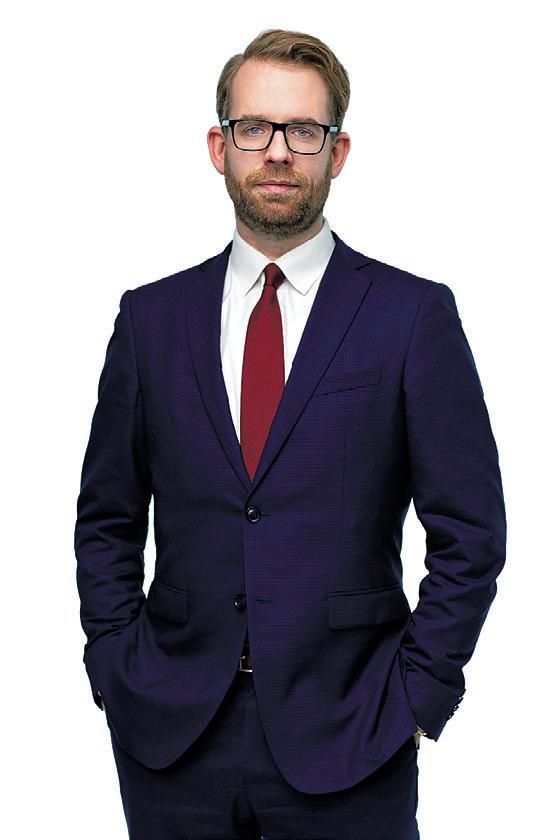

10 powerful federal agencies are working on creating a digital currency; here’s what that will mean for your privacy.
FAKKERT EDITOR-IN-CHIEFCHANNALY PHILIPP
LIFE & TRADITION, TRAVEL EDITOR
CHRISY TRUDEAU
MIND & BODY EDITOR
CRYSTAL SHI
HOME, FOOD EDITOR
SHARON KILARSKI
ARTS & CULTURE EDITOR
BILL LINDSEY
LUXURY EDITOR
FEI MENG ILLUSTRATOR
SHANSHAN HU PRODUCTION
CONTACT US
THE EPOCH TIMES ASSOCIATION INC. 229 W.28TH ST., FL.7 NEW YORK, NY 10001
SUBSCRIPTIONS READEPOCHINSIGHT.COM
GENERAL INQUIRIES, LETTERS TO THE EDITOR HELP.THEEPOCHTIMES.COM
ADVERTISING
ADVERTISENOW@EPOCHTIMES.COM
(USPS21-800)IS PUBLISHED WEEKLY BY THE EPOCH MEDIA GROUP, 9550 FLAIR DR. SUITE 411, EL MONTE, CA 91731-2922. PERIODICAL POSTAGE PAID AT EL MONTE, CA, AND ADDITIONAL MAILING OFFICES. POSTMASTER: SEND ADDRESS CHANGES TO THE EPOCH TIMES, 229 W. 28TH STREET, FLOOR 5, NEW YORK, NY 10001.
26 | Transgenderism
The United States is most eager to transition children, while Europe is pulling back, says report.
28 | Overseeing Schools
Parents are being urged to remove “social emotional learning” from classrooms.
32 | ‘Green’ Products
It’s often more about social appeal and corporate profits than the environment.
38 | Vasectomy Boom
The Roe v. Wade reversal has propelled more men to get the procedure.
42 | World Economic Forum
The WEF’s risk management report takes aim at energy and food.
58 | National Security
The Chinese government poses another threat with its car wars.
59 | Supply Chains
China’s rising EV dominance is a threat to the United States and its allies.
60 | Future of Technology
Technology is poised to transform the way the whole economy operates.
61 | Population Collapse
China faces serious challenges, owing in part to its shrinking population.
62 | European Economy
The shadow
unemployment in Europe is a real dilemma.
63 | Asset Management
Is tech investor Cathie Wood the target of misplaced criticism?
64 | Execution Chambers
In China’s operating rooms, people are murdered for their organs.
68 | Do Your Best
Whatever you do, the most important person to impress is yourself.
70 | Cottage Life
This delightful California estate is the antidote for stress.
72 | Quite a Shortcut
Transiting the Panama Canal provides a view of engineering genius.
75 | 1 Olive or 2?
It turns out that James Bond was wrong— martinis are best stirred.
76 | Brew Your Own
Like beer? Looking for a fun hobby? Consider brewing your own.

79 | Tough Timepieces
A sampling of watches that are practical with an air of adventure.
83 | Good Manners 101
Sign up for this fast refresher course on oftenforgotten etiquette.
MEMBERS OF THE JARL SQUAD POSE with their Viking galley ship in Lerwick, Scotland, on Jan. 31, before the Up Helly Aa festival later in the day. Up Helly Aa celebrates the influence of the Scandinavian Vikings in the Shetland Islands and culminates with up to 1,000 “guizers” (men in costume) throwing flaming torches into their Viking longboat and setting it alight later in the evening.
 PHOTO BY ANDY BUCHANAN/AFP VIA GETTY IMAGES
PHOTO BY ANDY BUCHANAN/AFP VIA GETTY IMAGES
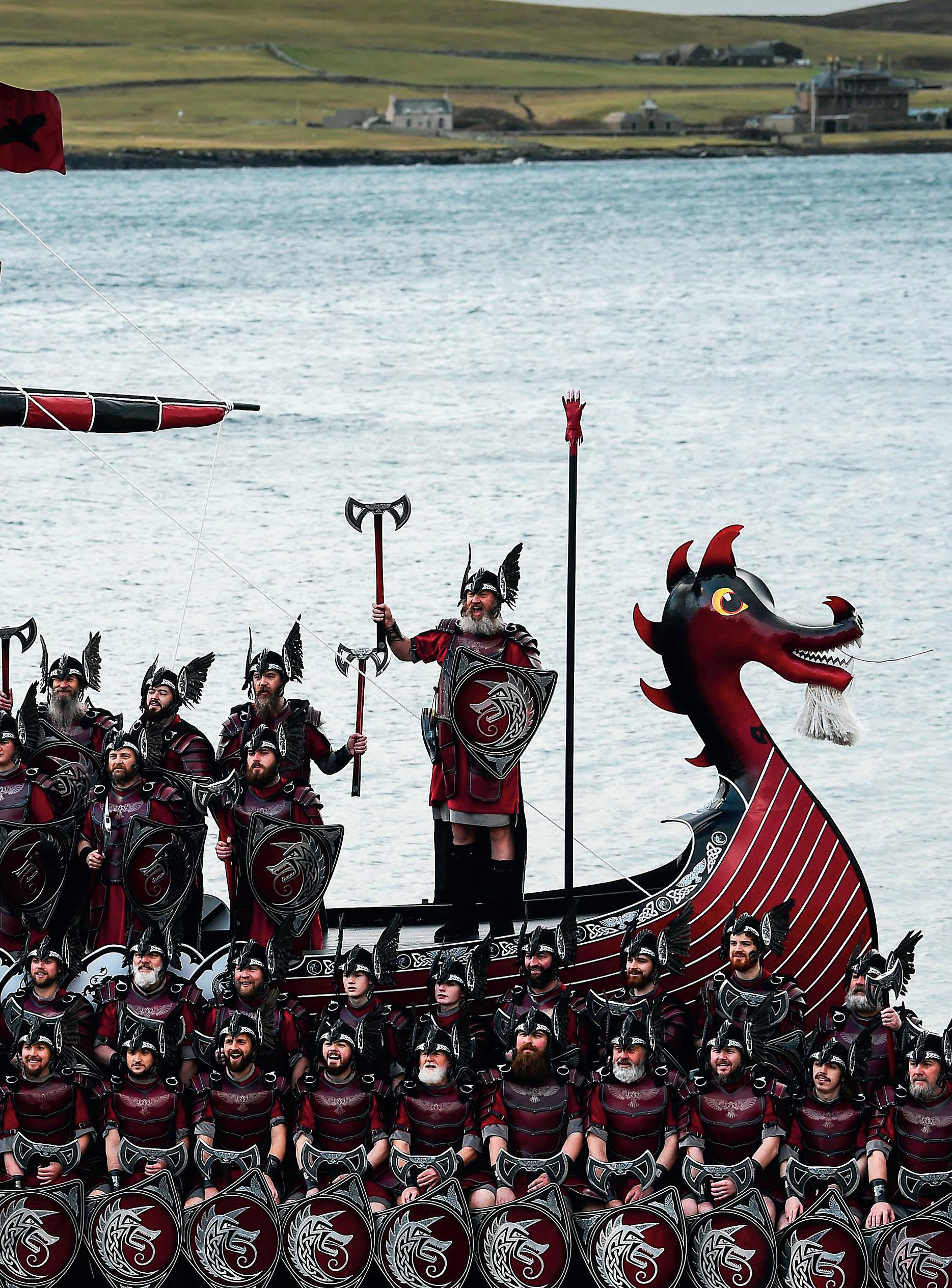

Participants attend a session of the World Economic Forum annual meeting in Davos, Switzerland, on Jan. 17.

Most Permissive The United States encourages gender transition in children while Europe pulls
The trend of Americans reaching for “green” products has little to do with helping the environment.
64%
of Americans were living paycheck to paycheck at the end of last year, marking 9.3 million more than the year before, a Pymnts. com and LendingClub survey shows.
21%
of American respondents say that government is their No. 1 problem, beating out inflation for the top spot, a Gallup poll shows.
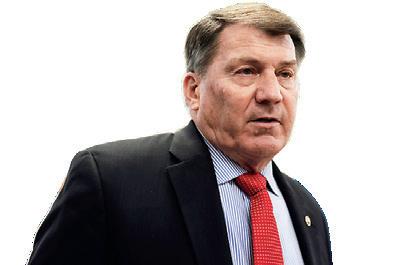

Two dozen Republican senators have warned President Joe Biden that they won’t support increasing the debt ceiling without spending cuts and structural reform in spending to tackle the nation’s $31 trillion debt crisis.
$16
President Joe Biden has announced a $16 billion railway tunnel project that connects New York and New Jersey under the Hudson River.
24th PLACE — The United States ranked 24th on the Transparency International’s 2022 Corruption Perceptions Index, which scores and ranks perceived levels of corruption in the public sector, with higher-ranked countries being more clean. By comparison, Russia ranked 137th and China ranked 65th.
“In recent years, many American politicians have ignored the brutal history of socialism and have openly embraced the label of socialist.”
“China is strategic in where they purchase farmland, sometimes near military bases.”Rep. Tom
Cole
THE FEDERAL RESERVE raised interest rates by 25 basis points, matching market expectations and lifting the benchmark federal funds rate to a target range of 4.50 percent and 4.75 percent.
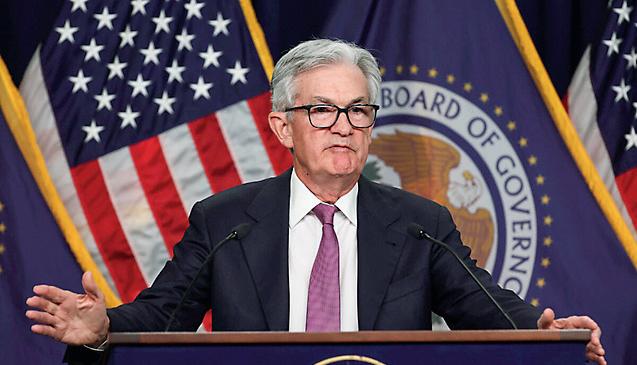
It was the smallest increase since the current quantitative tightening cycle began in March 2022.
THE IRS HAS ISSUED A REMINDER that millions of Americans are eligible for a tax credit that last year averaged more than $2,000, but 20 percent of those entitled to the money don’t claim it.

“This is an extremely important tax credit that helps millions of hardworking people every year,” Acting IRS Commissioner Doug O’Donnell said in a statement. “But each year, many people miss out on the credit because they don’t know about it or don’t realize they’re eligible.”
The Earned Income Tax Credit (EITC) was first approved by Congress in 1975, in part to offset the burden of Social Security taxes and to provide an employment incentive.
The tax credit is administered by the IRS, which stated that in 2022, roughly 31 million eligible Americans received about $64 billion in EITC payments. The tax credit amounted to more than $2,000 per eligible person on average.
THE U.S. HOUSE OF REPRESENTATIVES has approved a couple of bills related to the COVID-19 pandemic and vaccines.
The GOP-led lower chamber took up two COVID-19 measures with many others still on the docket for possible consideration later this year.
The first proposal would officially declare an end to the public health emergency of the COVID-19 pandemic. The second measure would end the vaccine mandate for health care workers at institutions that receive federal funding.
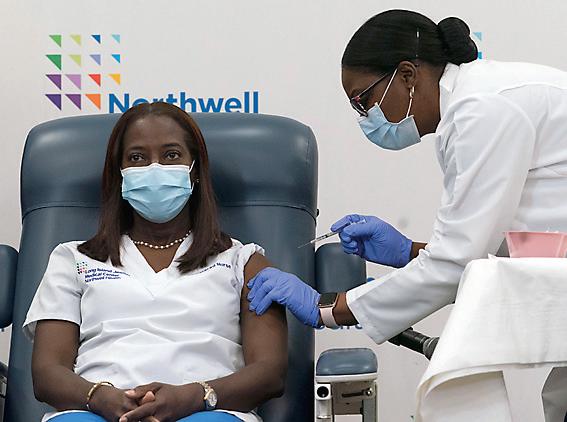
PEACE AND QUIET is still a major draw for people moving to smalleryet-growing states such as Tennessee from more crowded ones such as New York, but lower taxes, great personal freedom, and conservative politics have been bringing even more people in recent years.
Tennessee surpassed 7 million residents in 2022 for the first time, according to U.S. Census Bureau estimates, making it the seventhfastest-growing state in the United States by population last year.
States such as Tennessee have grown in popularity beyond the natural environment, mountains, and rivers. Those interviewed by The Epoch Times who moved from Illinois and New York said lower property taxes, low or no state income tax, and more conservative populations have become attractive reasons to move to the Southeast.

THE WORLD BANK has signed an agreement with four West and Central African nations worth $311 million to fund renewable energy projects.
The funds will finance about 106 megawatts (MW) of solar power generation capacity with battery energy and storage systems, and 41 MW expansion of hydroelectric capacity.
The countries are Sierra Leone, Liberia, Togo, and Chad. The funds will support electricity distribution and transmission interventions.
NATO SECRETARY-GENERAL Jens Stoltenberg is condemning China’s communist regime for “bullying its neighbors and threatening Taiwan.”
During a visit to Tokyo, Stoltenberg said that it’s a “critical moment for NATO and for Japan,” and warned that China and Russia are “leading an authoritarian pushback against international rules-based order.”

He further stressed that Japan and other democratic nations should work together with NATO to prevent the erosion of the international rulesbased order at China’s hands, and that the trans-Atlantic and Indo-Pacific regions are “deeply interconnected.”
THE UK SAW THE BIGGEST SINGLE DAY of strikes in a decade on Feb. 1, with up to a half-million workers, including tens of thousands of teachers, joining the nationwide industrial action.
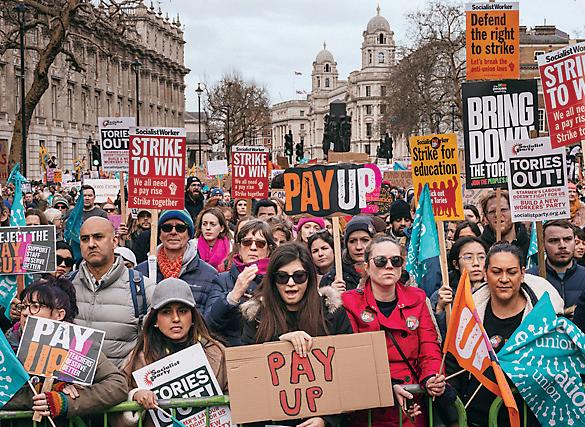
The mass walkout involved members of seven trade unions, including civil servants, train and bus drivers, and university staff. Picket lines were set up outside railway stations, schools, government departments, and universities across the country.
The National Education Union said it believes “more than 200,000” members joined the strike,” affecting around 85 percent of schools in England and Wales.
More than 100,000 members of the Public and Commercial Services Union also went on strike, including Border Agency staff at ports and airports.
by China’s newly appointed foreign minister, Qin Gang, has restoked fears of the Chinese Communist Party moving to supplant the United States as a principal foreign partner on the continent.
Qin’s five-nation Africa tour (Ethiopia, Angola, Benin, Gabon, and Egypt) from Jan. 9 to 16 followed less than two weeks after his appointment.
Known for his “tough talk” against the West, Chinese leader Xi Jinping’s trusted aide insisted that Africa must have a greater voice in the United Nations Security Council and other international bodies.






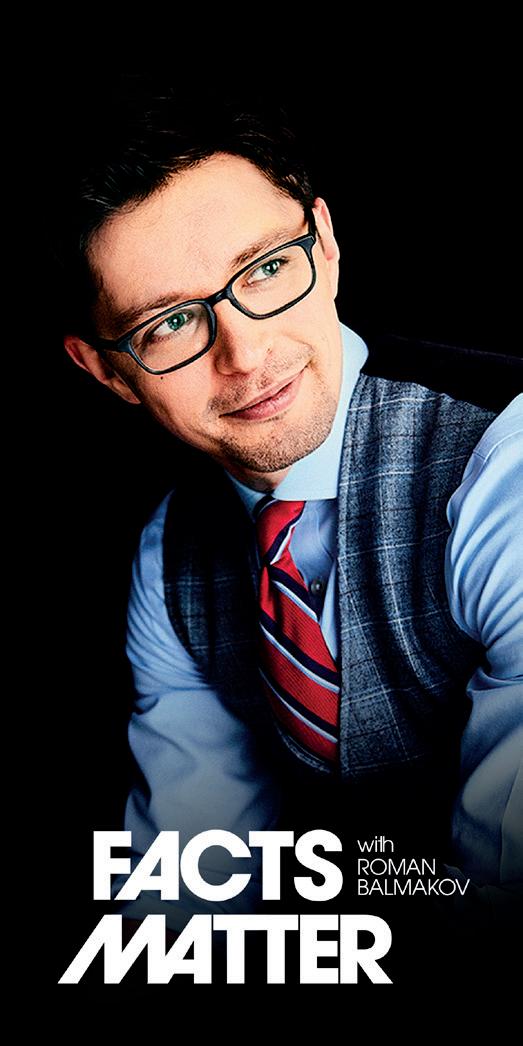


1. Policemen in plain clothes gather over the rubble of a damaged mosque following a Jan. 30 suicide blast inside the police headquarters in Peshawar, Pakistan, on Feb. 1. Rescue efforts ended with the death toll standing at 100.

2. A protester kicks a tear gas canister during clashes with police at a rally of nationwide strikes and protests in France over the government’s proposed pension reform, in Paris on Jan. 31.

3. Italian writer Roberto Saviano gets into a car in Rome on Feb. 1, following a hearing in a defamation lawsuit from Italy’s current Deputy Prime Minister and Minister of Infrastructure, Matteo Salvini, over a 2018 statement describing Salvini as the minister of the mob, when at the time Salvini was interior minister.

4. A local resident talks on a mobile phone in her apartment’s balcony in Bakhmut, Ukraine, on Feb. 1.

5. A woman walks home after fishing at a beach in Peukan Bada, Indonesia, on Feb. 1.
6. A macaque monkey bathes in a hot spring at the Jigokudani Yaen-koen (the Snow Monkey Park) in Yamanouchi, Japan, on Jan. 28.

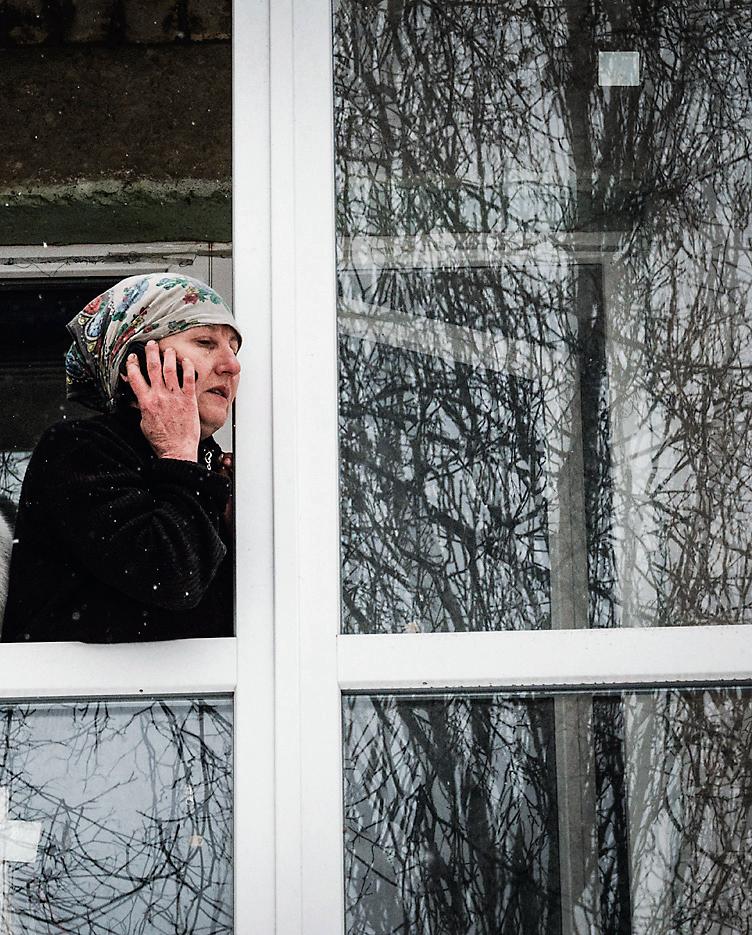

Once veterans leave military service, readjusting to civilian life can feel like a bottomless pit for many.
 PHOTO BY SPENCER PLATT/GETTY IMAGES
VETERANS
PHOTO BY SPENCER PLATT/GETTY IMAGES
VETERANS
The road to recovery can be long and uncertain,
but families can share veterans’ darkest hours

Williams, ariz.— U.S. Army veteran Rick Northrop and Juanita Hendrix had been dating for only a few weeks when they decided to go on a day trip together in northern Arizona.
Like all new couples, they were still getting to know each other. A leisurely drive among the ponderosa pine forests seemed perfect for that.
Then, without warning, Northrop fell silent in the middle of a conversation, while clutching the steering wheel.
Hendrix knew something was wrong.
And then, just like that, Northrop burst into tears—uncontrollable sobs that left his girlfriend speechless.
“I could tell he looked a little off. He just started crying,” Hendrix said. “I didn’t know what to do about it.”
She said it was her first encounter with diagnosed-veteran post-traumatic stress disorder (PTSD). She could only listen to Northrop’s weeping and hold him tight because “nothing I said made it better.”
Nearly five months later, Northrop and Hendrix are still together—and their relationship is stronger than ever.
However, the couple admits that it hasn’t been all sunshine and rose petals.
There have been personal trials—individually and as a couple—and emotional pressures only a PTSD-diagnosed veteran and a significant other could endure together if they choose.
Northrop, 35, an Iraq veteran, still suffers from PTSD and is working through his trauma with Operation: Transition Outside the Wire (OTOW) in Williams, Arizona. He has a good job running the kitchen at a bar in the town.
“The biggest thing I was diagnosed with was survivor’s guilt. That is why I have PTSD and many issues,” Northrop told The Epoch Times.
He knows the road to recovery is long and uncertain. But it’s one that he’s willing to take with the help of an understanding partner.
For many veterans diagnosed with PTSD, the road is often lonely, barren, and fraught with addiction, homelessness, and suicide.
Seven out of 10 marriages end in divorce, according to a 2005 Pentagon
study. Official estimates place the rate of suicide among veterans between 17 and 22 daily, while more than 33,000 were homeless in 2022.
According to the U.S. Department of Veterans Affairs (VA), 11 to 20 percent of every 100 veterans who served in Op-
erations Iraqi Freedom and Enduring Freedom have experienced PTSD in a given year.
The rate is about 12 percent for Gulf War veterans and 15 percent for Vietnam War veterans.
OTOW co-founder Tom West said a veteran struggling with PTSD can burden family members and caregivers tremendously.

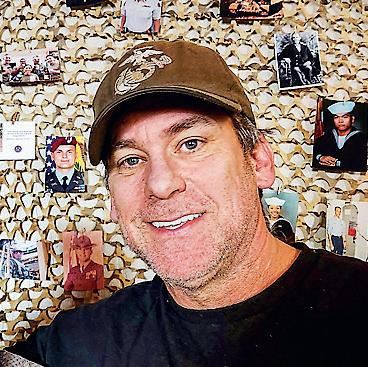
Only the most resilient people are up to the task over the long haul.
West said he’s amazed that his wife, Shannon Francis, has stayed by his side with all the personal demons that haunt him from the military.
“My wife is still in my corner even on my worst days—and I’ve had some bad ones,” he said.
“How she’s still with me is a miracle sometimes. My violence in my past and how I would deal with things would be explosive. It’s the fact that I admitted to having severe issues. Then we’d talk about it.”
As a former U.S. Marine who fought in the Gulf War, West grew up in a patriotic midwestern blue-collar family.
He admits to carrying unspeakable childhood baggage going into the military and, even worse, trauma from his combat experience on the way out.
“Everything that happens in your
“When you combine a brain injury with trauma, you’re on a different level. You are forever changed.”Tom West, co-founder, Operation: Transition Outside the Wire U.S. Army veteran Rick Northrop of Williams, Ariz., and his girlfriend Juanita Hendrix discuss what it’s like to experience PTSD on Jan. 16.
childhood—myself as well—you rub some dirt on it, and you move on,” West said. “Then you go in the military, and when you come out, it all comes forward like a tidal wave.”
“I thought I was fine. I went into the military, rubbed some dirt on it, and thought I was cool. All the stuff came flying back at me.”
West tried to manage his pain as many former combat veterans do—he drank a lot, got into fistfights, and lashed out unexpectedly at the people who mattered to him the most.
“My life is an open book now,” said West, who confessed that when he left the military, he did “a horrible thing.”
West hopped on a plane to Kansas City, Missouri, to live with a close friend. For
two years, his parents had no idea of his whereabouts. He never told them, feeling that he wasn’t “right” in his mind.
“You talk about a [horrible] thing to do,” he said.
At his lowest point, West was homeless for three months. He saw only one way out: draw his revolver, load a round, spin the cylinder, and put the gun to his head.
He recalled saying, “If I survive this, I will get off my lazy [expletive] and do something right.”
West pulled the trigger, but nothing happened.
In 2018, West made good on his promise by opening a coffee shop with Francis for homeless veterans in Long Beach, California.
The coffee shop became a safe space
for veterans needing friendship and a hot cup of java—or a warm place to spend the night.
West and Francis had found their true calling. Unfortunately, the shop closed in 2020 due to the COVID-19 pandemic.
The couple left California and started a new life in Williams—and a new mission helping embattled veterans through Operation: Transition Outside the Wire.

Their nonprofit operates with 100 percent funding by selling coffee that’s roasted, bagged, and shipped by local veterans.
Each one-pound bag of coffee displays the replica of a dog tag of an actual veteran.
West said the nonprofit serves veterans diagnosed with PTSD and other social adjustment problems. The program
includes a ministry, financial planning, mental health and family assistance, career counseling, and placement.
Plans are to build a ranch on 100 acres in Williams with 25 safari-style tents for at-risk veterans and a multi-services center.
The operation also envisions 25 acres of planted coffee and a roasting and distribution facility run by veterans.
“We take a different approach,” West told The Epoch Times. “A lot of it involves the ability to talk to veterans—that makes a huge difference. If we can get families—have them go through it with them—they also learn how to have those conversations.
“We must recognize their service— mothers, fathers, grandparents, and spouses—they serve too.”
Once veterans leave military service, they often find themselves in an unstructured environment for the first time in years.
And if war is hell, readjusting to civilian life can feel like a bottomless pit for many veterans.
“I’ll speak from my experience with Charlie,” West said.
Charlie was a nice guy—a down-andout veteran who West and Francis met in Long Beach during one Thanksgiving.
When Charlie showed up at their coffee shop, he was hungry and asking for a hot meal.
“That night, we had him sleep in our coffee shop,” West said. “After that, he disappeared for a while and reunited with [a woman] who became his wife.
“They were doing great with a house—new cars. They had a great thing going on.”
Around Christmas—an emotionally challenging time for many veterans— Charlie was in crisis and got himself checked into a local VA hospital.
West said the VA put him on medication that made it so “you couldn’t recognize him in a conversation.”
Another time, Charlie called five people on his cellphone to say he had cut his wrist “straight up, from here to there,” West said, pointing to the same spot on his wrist.
Charlie attempted to cut his throat, but the knife was too dull.
That was Charlie’s first attempted suicide. West said the VA admitted Charlie
for a second time and put him on lithium for depression.
“Fast forward, he’s on the I-10 freeway in Upland. He cuts his throat while driving. He calls his wife, an Army vet,” informing her that he’s suicidal, accord-
ing to West.
West said the California Highway Patrol responded, and when they ordered Charlie out of the stopped vehicle, he refused to drop the knife.
“[So] they shot him and killed him,” West said.
West now prefers not to use the acronym PTSD. He feels the more accurate term is post-traumatic stress injury.
“When you combine a brain injury with trauma, you’re on a different level. You are forever changed,” West said.
As an emotionally wounded veteran, West has had plenty of personal experience working with veterans diagnosed with mental health issues such as PTSD.
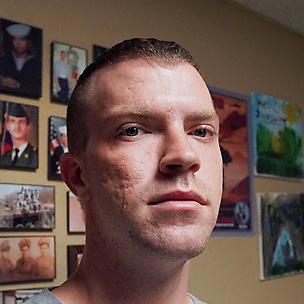

Sean, another veteran, called West and Francis on the phone one day, feeling that he was a danger to himself and others. The couple immediately went to Sean’s location and drove him to the VA hospital, but the psychologist was on vacation.
Sean stayed at their house until the crisis was over. West put his arm around him and talked him down.
At least Sean was off the streets,
“It’s just hard. Once the [suicidal] thought is there, you can’t un-think it.”
Brendan Bosley, veteran
West said.
U.S. Air Force veteran Brendan Bosley, who has service-related PTSD, can attest to the healing power of a willing shoulder as he receives help through OTOW.

Bosley, 30, joined the Air Force in January 2019 and was stationed in Alaska for his service.
After his discharge, Bosley, raising two young daughters from a previous marriage, went to live with his fiancee in Indiana with her two young boys. But the stress associated with Bosley’s PTSD proved too much for his fiancee, and she became physically abusive, Bosley said.
“She didn’t know how to help. She didn’t know what to do or how to reduce the stress of the situation. I think she just gave up. It was too much,” he said.
The day finally arrived when she packed her things and vanished, leaving Bosley to care for her two sons without her. He now lives in a temporary shelter in Cottonwood, Arizona, surviving on 90 percent VA disability benefits while trying to be a single father to four children.
Thoughts of suicide plague him daily.
“The most recent thoughts replay over
and over—just driving off the road. I’m always on the road, driving. That has been the big factor in how I would end it,” Bosley told The Epoch Times.
“The kids are my anchor. When I think of suicide, I focus on the kids. I do activities and play with them. I try to balance out what I need financially and where I need the help.”
When his suicidal thoughts become overwhelming, Bosley said he calls the VA hotline. Or he counts or spells long words backward—anything to take his mind off himself and suicide.
(Far Left) Veterans Rick Northrop (L) and Tom West. “The biggest thing I was diagnosed with was survivor’s guilt,” says Northrop. (Left) Tom West and wife Shannon Francis. West said the most important thing missing in the lives of veterans is the close brotherhood they experienced in the military.
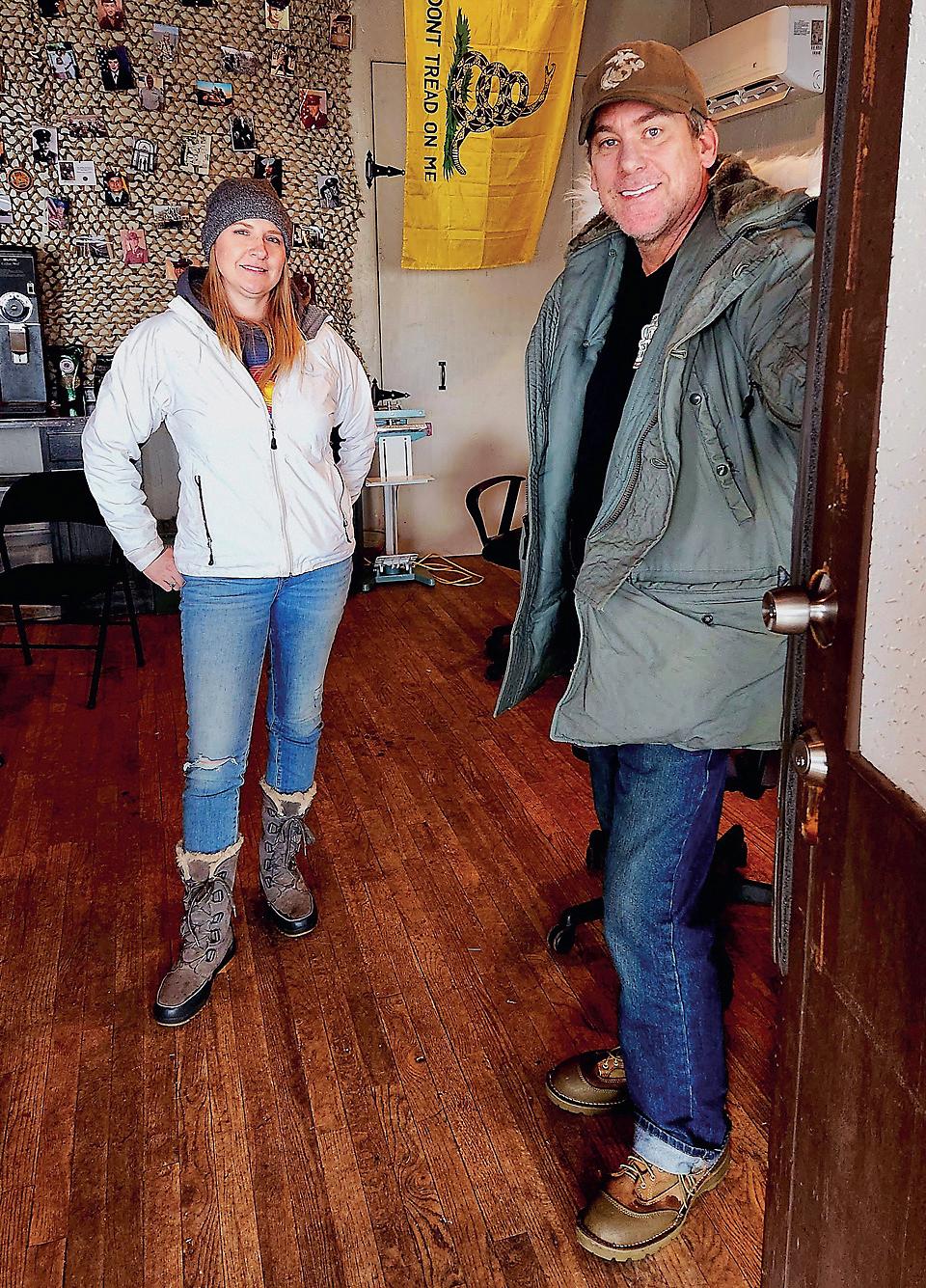
“It’s just hard. Once the thought is there, you can’t un-think it,” Bosley said.
But the worst part of having PTSD is suffering alone in silence.
“Even with my kids, sometimes, it’s just not enough,” he said.
The VA helps only so much, but “you don’t hear anything for a week or two.”
“Sometimes, you need help right now,” Bosley said.
Absent a supportive partner, he fears being alone, with “the pressure on” him constantly.
“It gets to the point of where is the silver lining?” Bosley said. “I need someone who’s not willing to walk away.”
Brendan’s mom, Trina, said she does her best to look after him in his darkest hours of need. However, it’s not easy being the mother of a veteran with PTSD.
Sometimes, she doesn’t recognize her son.
“When my son came out [of the military], he was a completely different person than going in,” Trina said.
He keeps his feelings hidden—“but inside, he’s dying.”
“I don’t know what to do for him,” she said. “I don’t understand what he went through in the military because I never went through the military.”
Trina knows that part of it is due to Brendan participating in a military Honor Guard in the Air Force in which “many funerals were suicides,” each
Several books on healing veterans with PTSD are available at Operation: Transition Outside The Wire in Williams, Ariz., on Jan. 16.

Iraq and Afghanistan War: 11 to 20 percent
Gulf War: 12 percent
Vietnam War: 15 percent
affecting him deeply.
“Every time he turned around, there was a funeral, a suicide,” she said.
Bosley now has trouble sleeping.
“He has night sweats and is up all day long; he’s so wired. He’s constantly doing something or else he goes bonkers,” Trina said.
In Bosley’s worst moments, his mother calls West on the phone, saying he’s “having a day. Or something is going on.”
“Tom is right here,” she told The Epoch Times. “He’ll talk with Brendan where I can’t.”
Romel Armendariz is another Army veteran living in Williams who’s been struggling with combat-related PTSD from his service in Iraq.
He carries the painful memories of battlefield carnage and plugging bullet wounds almost every moment that he’s awake.
Armendariz, 24, was diagnosed with PTSD following his discharge from the military and was homeless for a short time. He credits his wife, Elaina Galvan, and their children with helping him continue despite the addiction’s pain.
Just talking about PTSD brings tears to his eyes.
Armendariz said working with OTOW has helped him immensely, although he still has thoughts of suicide.
“It’s circumstantial,” he said.
“Sometimes, it happens at work. Sometimes, it’s when I’m listening to music or exercising. I talk to my wife about it a lot. I talk to Tom about it a lot.”
The last time he thought about suicide, it involved a .45 caliber pistol.
“I haven’t touched a gun in two years [but] it still cycles through my head ev-
ery day,” Armendariz told The Epoch Times. “But then I realize what I have in life. It keeps me from acting on those thoughts.”
Sudden noises will often trigger a PTSD episode, such as the sound of popping bubble wrap—just like gunshots, he said.
West said a combat veteran learns to be hyper-vigilant even with nonexistent threats in civilian life.
“When you see a couple at a restaurant, watch them sit down. A veteran will al-
ways sit where he can see the front door,” West said.
“You’re always protective. You always want to see who’s coming through the front door, doing a situational assessment. Who’s dangerous.”
Galvan said she became aware of Romel’s PTSD when they met five years ago. She has stuck with him since he’s been clean and sober for months.
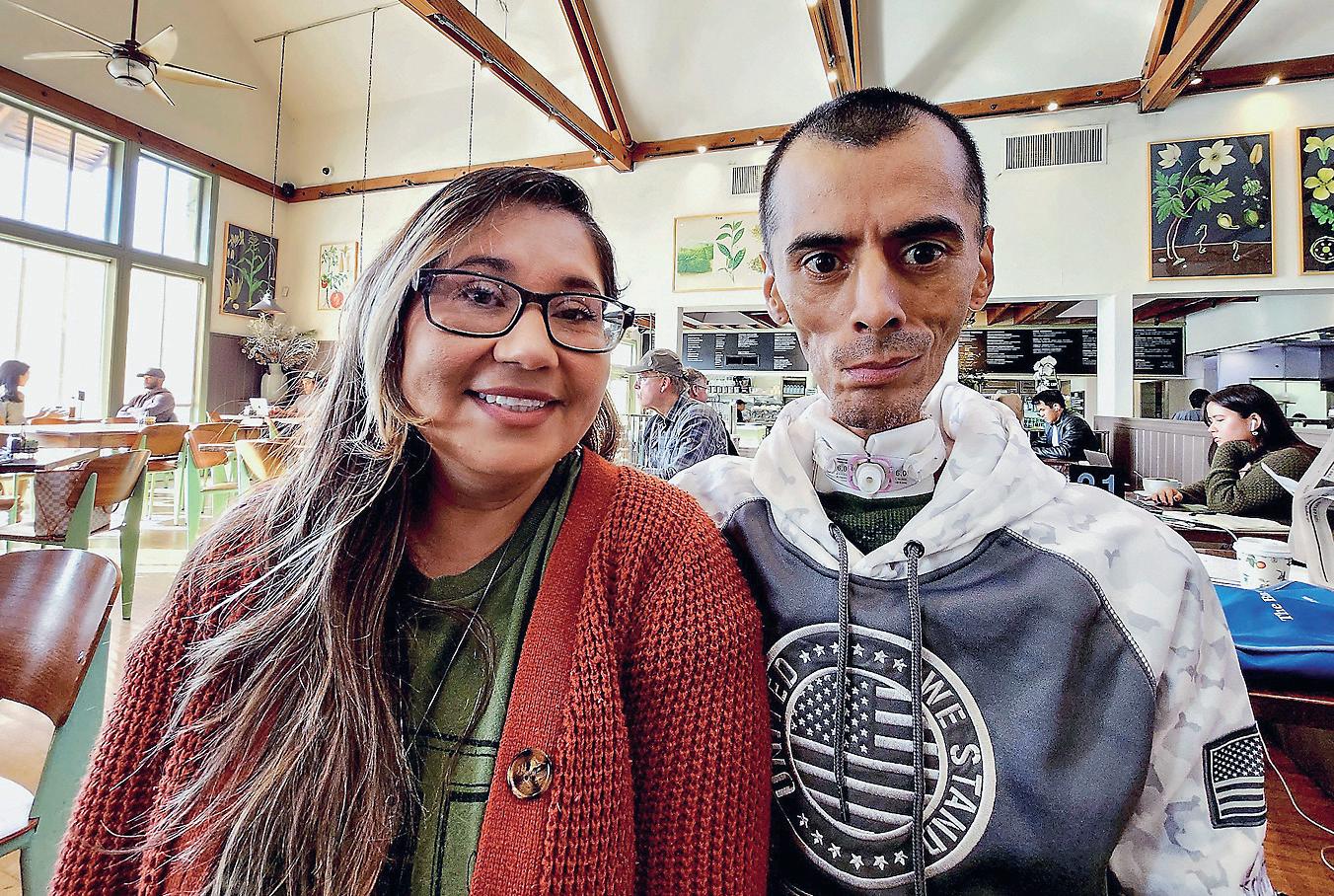
“It was tough because it was like in cycles, you know? You do have to learn what to do and have an understanding. If you don’t, it’s chaos,” she told The Epoch Times.
“I can see how [PTSD] would put stress on anybody’s marriage. With everything you must go through when you join the military, I don’t think anybody comes out without some PTSD—mild or severe.”
The National Association of Social Workers (NASW) said the important thing for a veteran caregiver is to listen.
“War is a bad thing, and terrible things happen,” the NASW website states about PTSD. “Listen [when] he talks about the war. Don’t judge, and don’t try to stop or smooth over his emotions.”
If a veteran cries, let him do so “with you or alone, and don’t try to interrupt or stop” him.
And never tell a veteran that you understand what they’ve experienced, “because you don’t and can’t.”

West said OTOW helps veterans with trauma through satellite offices in Colorado Springs, Colorado, and Long Beach.
Husband and wife veterans’ advocates Brian and Rocio Alvarado are active with the Long Beach facility.
Together, they’ve spent the past two years helping homeless veterans with food, water bottles, and clothing donations at the West Los Angeles VA Medical Center in Brentwood, California.
The center’s 388-acre campus is home to 140 tiny homes, built in November 2022 in response to a burgeoning homeless tent community known as Veterans Row.
“You would see tents, and they had American flags,” Rocio Alvarado said. “We’d bring cases of food, water, clothing, the essentials. Many have special requests.
“I feel we’re all just a paycheck from living on the streets. I feel like our veterans should not be dying on the streets. Nobody should.”
Brian Alvarado is a former U.S. Marine sergeant diagnosed with PTSD. He recently underwent cancer treatments following exposure to toxins during Operation Iraqi Freedom and now requires a feeding tube and is largely unable to speak.
“If I weren’t around, he would have given up a long time ago,” Rocio Alvardo said. “Imagine our vets with nobody to advocate, fight, and speak up for them.
They’d give up.”
Their 15-year-old daughter still struggles to understand her father’s illness, even after reading books about PTSD.
“She still takes it personally,” Rocio Alvarado said. “For her, it’s very traumatic.”
U.S. Army veteran Robert Reynolds remembers the long line of pitched tents along San Vicente Boulevard outside the West Los Angeles VA complex that made up Veterans Row.
“Camping used to be right there,” he said, marking the location with his hand.
“It used to line the street about a quarter mile down.”
There were attempted suicides on Veterans Row, Reynolds said. He attributes
them to veterans in a mental health crisis having limited or no access to care or shelter.
“They go down a dark road,” he said.
The homeless situation on Veterans Row lasted almost two years before the tents came down in November 2022, and the veterans began moving into the eight- by eight-foot tiny homes on the VA campus.
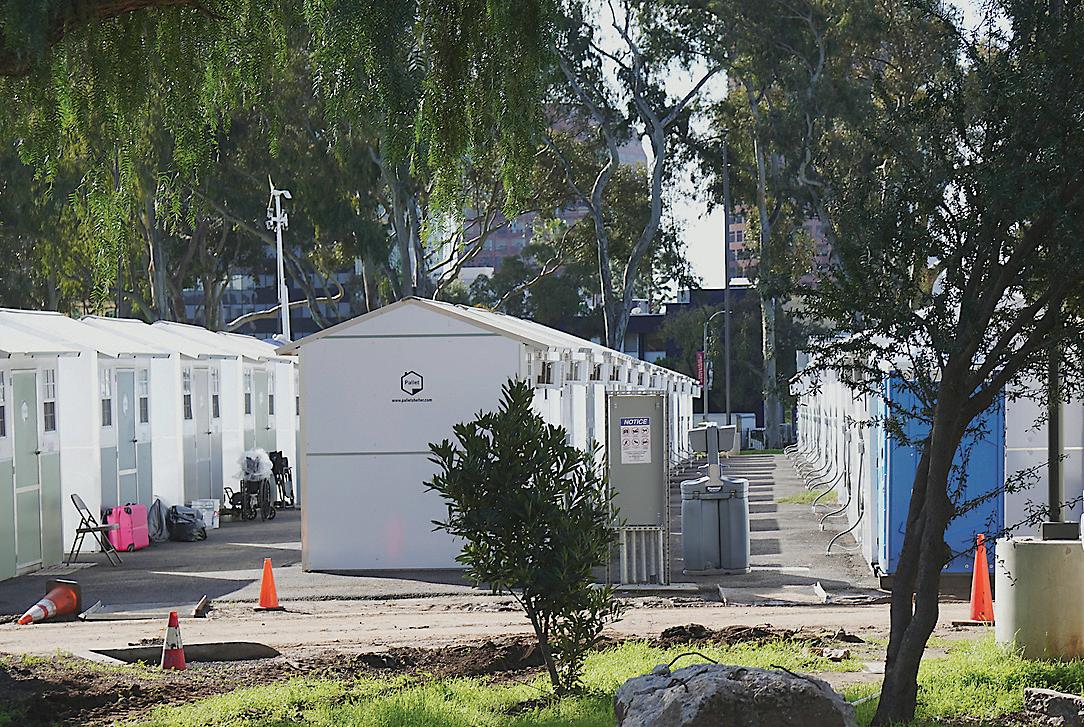
Now, Reynolds helps homeless veterans at the shelters as a member of American Veterans Post 2 in Los Angeles.
While the tiny homes are a step up from living on the street, Reynolds said more should be done to meet the longterm housing needs of veterans.
“I’m happy there’s at least something where they can show up and have a place to stay,” he told The Epoch Times. “They should be in buildings.
“I think it’s disgraceful you have all these empty buildings [on campus] and all these veterans in sheds with wheelchairs and walkers. It’s crazy.”
Northrop said the worst part of having PTSD is its inner nature, especially during a pandemic, and having to sit around nursing one’s thoughts.
Trina believes her son Brendan might not have survived if it hadn’t been for the emotional support from OTOW.
“I don’t think [veterans are] taught to come back into the civilian world,” she said. “You’re always in survival mode. But when you come back to the civilian world, if there’s nobody to help you or talk to you, your mind is constantly in that mode.
“I believe in my heart Tom and Shannon saved Brandon. I think he would have committed suicide.”
West said the most important thing missing in the lives of veterans is the close brotherhood they experienced in the military.
That sense of purpose and belonging is the key to a lasting recovery from PTSD, he said.
“I don’t believe there’s a point of no return with any human being,” West said, although “nothing will match what you did in the service.”
He said when you put on the uniform, “when you’re with your brothers and sisters—I’ll tell you, there’s nothing greater in life than that experience. And then, when you come out, it all goes away.”
“I don’t think [veterans are] taught to come back into the civilian world. You’re always in survival mode.”
Trina, mother of veteran

Critics call government plans to create a digital currency an ‘assault on financial privacy’

In contrast to the U.S. dollar in its current form, a central bank digital currency would be issued directly by the federal government, giving it potentially unlimited access to and control over Americans’ money.
 PHOTO BY EFDN/SHUTTERSTOCK
PHOTO BY EFDN/SHUTTERSTOCK
AS THE FEDERAL GOVERNMENT ADVANCES ITS plans to create a central bank digital currency (CBDC), critics are sounding the alarm about how much power a digital dollar would place in the hands of federal agencies.
The latest step toward a CBDC, called “Project Cedar” and initiated by the Federal Reserve Bank of New York, completed its first phase on Nov. 4, 2022, as a “wholesale” digital dollar for cross-border payments that’s only available to banks and corporations. This effort, barely noticed amid the headlines surrounding the scandalous collapse of cryptocurrency exchange FTX, follows Project Hamilton, a retail CBDC beta test conducted in February 2022 by the Boston Fed in collaboration with the Massachusetts Institute of Technology’s Digital Currency Initiative.

The Fed lauded the success of its latest digital dollar venture, stating: “Project Cedar showed that blockchain-enabled cross-border payments can be faster, simultaneous, and safer.” But critics of the Fed’s CBDC initiatives were less enthusiastic.
“The launch of a CBDC would most likely be the single largest assault to financial privacy since the creation of the Bank Secrecy Act and the establishment of the third-party doctrine,” Nicholas Anthony, a policy analyst at the Cato Institute, told The Epoch Times. In contrast to the U.S. dollar in its current form—cash and bank deposits—a CBDC would be issued directly by the federal government, giving it potentially unlimited access to and control over Americans’ money.
“At its core, financial privacy is important because this information can reveal a person’s relationships, profession, religion, political leanings, locations, and so much more,” Anthony said. “And while cash offers the greatest privacy protection for Americans, banks too offer a sort of air gap that protects Americans from prying eyes. A CBDC, in contrast, would establish a direct link between individual citizens and the central bank.”
In March 2022, President Joe Biden issued an executive order to study and develop a CBDC for the purpose of financial stability and preventing crime, as well as “human rights; financial inclusion and equity; and climate change and pollution.”
“My administration places the highest urgency on research and development efforts into the potential design and deployment options of a United States CBDC,” Biden’s order stated.
The agencies tasked with developing a digital dollar include the State Department, the Treasury Department, the Defense Department, the
Justice Department, the Commerce Department, the Department of Labor, the Department of Energy, the Department of Homeland Security, the Environmental Protection Agency, the Director of National Intelligence, and numerous others.
The 1970 Bank Secrecy Act to which Anthony referred forces banks to report to the Treasury Department’s Financial Crimes Enforcement Network all transactions over $10,000, and any other transactions banks considered suspicious. According to the Treasury Department, banks reported about 20 million cases of suspicious activity in 2019. CBDCs can make government access to private transactions absolute.
“We don’t know who is using a $100 bill today, we don’t know who’s using a 1,000-peso bill today,” Agustin Carstens, general manager of the Bank of International Settlements, stated in October 2020. “The key difference with a CBDC is the central bank will have absolute control of the rules and regulations that will determine the use of that central bank liability, and also we will have the technology to enforce that.”
In a free-market economy, money functions as both a medium of exchange and a store of value, in other words, as a vehicle for making payments and for accumulating savings. However, the Biden administration has set new goals for its vision of the digital dollar. These include social justice and environmental goals, which can only be achieved if the CBDC is programmable.
A programmable CBDC could allow the government not only to track transactions but also could include features such as negative interest rates, which deduct a percentage of your money over time. This would make stimulus policies more efficient by compelling people who receive government payouts to spend rather than save. Another feature that progressives favor is the ability to limit the use of CBDC for certain products, such as gasoline or firearms.
Private companies are already taking steps in this direction. PayPal, for example, doesn’t allow its services to be used for gun purchases. Visa and Mastercard offer credit cards that measure the carbon footprint of the user’s spending each month and can give a “nudge” when certain limits are breached. And Visa, Mastercard, and American Express have set up category codes to track Americans’ gun purchases.
A CBDC can go further, however, discouraging purchases the government doesn’t like by imposing surcharges, or shutting off access to money altogether. In this way, the Fed or the Treasury Department could set government policy on fos-
The latest step toward a CBDC, called “Project Cedar” and initiated by the Federal Reserve Bank of New York, completed its first phase on Nov. 4, 2022.
sil fuels, gun control, and social justice without ever having to get laws approved by Congress.
“That’s exactly what’s not supposed to happen with money,” Wharton Business School professor Christina Skinner told The Epoch Times. “It’s supposed to be this inalienable property right whose value is supposed to be set and maintained by market forces.”
Advocates of a CBDC argue that the United States must have a digital dollar because other countries are doing it.

Fed Vice Chair Lael Brainard stated in May 2022: “The People’s Bank of China has been piloting the digital yuan, and several other foreign central banks are issuing or considering issuing their own digital currencies. A U.S. CBDC may be one potential way to ensure that people around the world who use the dollar can continue to rely on the strength and safety of the U.S. currency to transact and conduct business in the digital financial system.”
The Atlantic Council, a nonprofit “group of foreign policy change makers,” reported that “as of December 2022, all G7 economies have now
CBDCs can make government access to private transactions absolute.
moved into the development stage of a CBDC. The New York Federal Reserve’s wholesale CBDC experiment, Project Cedar, has shifted the U.S. from research into development.”
Governments around the world are increasingly concerned that the rise of cryptocurrencies is undermining their ability to control the financial system. Noting that “in November 2021, non-state-issued digital assets reached a combined market capitalization of $3 trillion, up from approximately $14 billion in early November 2016,” the Biden executive order states that the United States must issue a digital currency to maintain its role as the world’s reserve currency, as well as to fight financial crime and make banking services available to underserved communities. But the benefit to citizens remains unclear.
Project Cedar has been justified as an effort to make cross-border payments easier and faster, Skinner said.
“If this sounds vague, it’s because it is vague. You can’t really pin anyone down and have them explain to you how the CBDC is going to make cross-border payments easier.
“Central bank reserves that banks hold are already digital,” she said. “It’s difficult to really understand from a legal and technical standpoint what the difference is between a wholesale CBDC—this thing that only the banking sector can have—and the kinds of central bank reserves they already have; and certain members of the Federal Reserve Board have made this point over and over again.”
This has led some to suspect alternative motives.
“A wholesale CBDC is likely to be a stepping stone toward a retail CBDC,” Anthony said. “In the worst case, it offers a sort of beta test for the Federal Reserve to test how effectively a CBDC might work without involving the entire country during the first round.”
Biden’s executive order stated that Attorney General Merrick Garland must report within 180 days as to whether the administration needs congressional approval to create a digital dollar. That deadline has come and gone without a report from the Justice Department, and Congress hasn’t granted authorization to the administration to create a digital dollar. However, the administration has been moving forward with beta-testing CBDCs anyway.
“They have not launched a CBDC, but they have conducted extensive theoretical and experimental research with banks, payments networks, and even tech companies,” Anthony said.
Skinner says creating a digital dollar without congressional approval “flies in the face of most things we think about separation of powers.” The U.S. Constitution explicitly states that only Congress has the power to “coin money and regulate the value thereof.”
“The constitution was constructed to keep monetary and fiscal power away from the president because of the tyrannical danger that comes from princes who have power over the money and the purse,” she told The Epoch Times.
In January 2022, Rep. Tom Emmer (R-Minn.) introduced a bill to ban the Fed from establishing a retail CBDC.
“Not only would this CBDC model centralize Americans’ financial information, leaving it vulnerable to attack,” Emmer stated, “but it could be used as a surveillance tool that Americans should never tolerate from their own government.”
Because of its risks and downsides, a CBDC could be a difficult sell to U.S. citizens as long as cash and bank deposits were still available as an alternative. One option for a CBDC to gain widespread acceptance would be to “crowd out” existing dollars by offering a higher interest rate on a CBDC compared to bank deposits, similar to how crypto exchanges such as the now-bankrupt FTX were able to attract cash in exchange for digital currencies.

One point that critics make about a U.S. CBDC is that only the government seems to want it; there doesn’t appear to be significant consumer demand for a government-issued digital dollar.
A September 2022 poll of 2,200 bank customers found that 86 percent of Americans were “satisfied” or “very satisfied” with the bank services they receive. The survey reported that “nine in 10 (88 percent) consumers agree they have multiple options when selecting products and services such as bank accounts, loans, and credit cards, and 85 percent said they have a wide array of choices when deciding where to bank.”
The claim that a CBDC would achieve “equity” by making banking services available to the underserved also appears dubious. According to a report from the Federal Deposit Insurance Corp., more than 95 percent of all American households have checking or savings accounts.
Among those who don’t, the top three reasons cited were: “Don’t have enough money to meet minimum balance requirements,” “Don’t trust banks,” and “Avoiding a bank gives more privacy.” It’s unclear how a CBDC would resolve any of those issues.
“For the American people, there are no benefits to be gained,” Anthony said. “A CBDC would solely be to the benefit of the federal government by increasing its surveillance and control over the financial system.”
“[The CBDC model] could be used as a surveillance tool that Americans should never tolerate from their own government.”
Rep. Tom Emmer
TRANSGENDERISM
New report finds US most eager to provide medical intervention to children, while Europe pulls back
By Terri WuThe United states is the “most permissive country” for legal and medical gender transition of children, according to a new study.

The report, released on Jan. 16 by Do No Harm, a group that seeks to insulate the health care profession from “radical, diverse, and discriminatory ideology,” compared the United States with 11 Northern and Western European countries on metrics including legal requirements to change gender, provisions for medical transition, the minimum age for puberty blockers and cross-sex hormones, and the number of youth gender clinics.
“In a sharp departure from the gender affirmation model employed in the United States, these countries now discourage automatic deference to a child’s self-declarations on the grounds that the risks outweigh the benefits, while also calling for months-long psychotherapy sessions to address co-occurring mental health problems,” the report reads. “Notably, in the United Kingdom, the Cass Review attributed the lack of safeguards for children at the largest pediatric gender center to the ‘affirmative
THE UNITED STATES has at least 80 pediatric gender clinics compared to only a single such clinic in most European countries.
model,’ which ‘originated in the USA.’”
In July 2022, the UK’s National Health Service (NHS) announced that it would close its only gender identity clinic for children, the Tavistock Clinic, in 2023. The NHS made the decision based on an official report—the Cass Review, conducted by top British pediatrician and former president of the Royal College of Pediatrics and Child Health Dr. Hilary Cass—that cited safety issues and concerns over long-term effects.
As a result, the NHS stated that it would move young people who believe they have gender dysphoria into regional centers, which would take a more “holistic” approach with mental health support.
In November 2022, the World Professional Association of Transgender Health (WPATH) said the Cass Review had “serious flaws.”
Health authorities in Sweden updated their guidelines for young people with gender dysphoria by advising against puberty blockers, surgery, and sex-change hormones before adulthood, a departure from WPATH’s recommendation to provide affirmation and medical
intervention as the first line of treatment.
In Finland, adolescents experiencing gender dysphoria were allowed to access puberty blockers and hormones until 2020, when the country’s national health care council changed how it dealt with the matter through a new guideline that recommended identity exploration and mental health treatment.
‘Inflection Point in the United States’ Andrew Brown, associate vice president of policy at the non-profit Texas Public Policy Foundation, published a report in June 2022 similar to the new study. He described the situation with a hiking analogy.
“The U.S. were hikers, and then we were seeing England, Finland, Sweden, all these other countries running away, saying, ‘No, we went down further; that’s not a good path to go down,’” he told The Epoch Times.
“And so we’re at an inflection point in the United States to determine: Are we going to go down this path that other countries are telling us not to go down, or are we going to heed their advice and stop providing these experimental
Parents protest outside the Davis Joint Unified School District offices over a talk featuring Rachel Pepper, co-author of “The Transgender Child,” in Davis, Calif., on Jan. 11.

treatments to kids?”
Dr. Michelle Cretella, executive director of the American College of Pediatricians, said she has been warning parents about “transgender ideology” since 2016. Cretella worked for 15 years as a pediatrician specializing in behavioral health.
“Many European countries have only a single gender clinic for children as opposed to the United States, which has at least 80 pediatric gender clinics and allows independent physicians and nurse practitioners to dispense puberty blockers and cross-sex hormones,” she told The Epoch Times, explaining why European countries are taking precautions on medical procedures for gender transition. “It is much easier to investigate and obtain data on benefits or harm from a single centralized clinic.
“The myth that sex and gender are both social constructs has become ubiquitous across American public institutions, including within our academic, medical, and mental health industries, to the point that this ideological myth trumps objective evidence of potential and actual irreversible harm to children.
“I believe that the vast majority of lay and professional Americans know sex is innate and immutable from conception to death, but remain silent for fear of being canceled or worse.”
Brown said his organization is working with state representatives to pass new legislation to “provide common sense protections for kids so that they’re not subjected to medical experimentation in the state of Texas.”
“The American people need to understand how radical the United States has become regarding gender ideology,” Dr. Stanley Goldfarb, board chair of Do No Harm, told The Epoch Times in an emailed statement. “Our study documents the concerns expressed by many European nations about caring for children with gender dysphoria. We show how the concept of ‘gender-affirming care’ in the United States is harming many children.”
WPATH officials didn’t respond to a request by The Epoch Times for comment.
“The American people need to understand how radical the United States has become regarding gender ideology.”
Dr. Stanley Goldfarb, board chair, Do No HarmEDUCATION
Group urges parents to fight to remove social and emotional learning from classrooms
 BY JACKSON ELLIOTT
BY JACKSON ELLIOTT
Students attend class at a school in New York on Sept. 27, 2021. Moms for Liberty argues SEL uses its framework to “shift the values, beliefs, attitudes, and worldviews of students.”
new reso U rce from Moms for Liberty helps parents who want to keep “antiracism” training and other politically charged social justice topics out of their children’s classrooms.
The new guide tells how schools use social and emotional learning (SEL) to weave left-wing ideology into teaching, often in unrelated classes, such as math. Parents can access the free guide to spotting SEL on the Moms for Liberty website.
Critics say SEL peddles critical race theory (CRT) as a way to navigate emotions. CRT stems from Marxist teachings of critical theory and paints most of what goes on in society as dominated by a power struggle between the race of the oppressor and that of the oppressed.
Moms for Liberty has put together a Social Emotional Learning Guide for Parents, which explains how SEL programs indoctrinate children into left-wing ideology, and tells parents how to combat it.
It’s the theory that propels Black Lives Matter and demonizes the country’s Founding Fathers.
The 110,000-member parents’ group also is pushing participation in the Moms for Libraries program. That effort places in schools books that teach civics, history, and “American values” to “benefit present and future generations,” the group says.
In 2022, Moms for Liberty donated more than 6,740 children’s books to schools and has given 75,000 pocket versions of the U.S. Constitution to classrooms.

“This is the start of the parent revolution,” Moms for Liberty co-founder Tiffany Justice told The Epoch Times.
Justice helped start the parental rights activism group in 2021. In just two years, the parent-driven organization has launched more than 260 local chapters nationwide in 43 states.
In the recent midterm elections, members’ campaign efforts helped shift the balance of power on at least 56 school boards from having a majority of members pushing left-leaning views to having a majority of conservatives making policies for schools.
And 50 percent of the candidates supported by members for school board seats nationwide won their bids for office, as previously reported.
The group’s efforts helped elect 272 school board candidates who campaigned on a platform of supporting parental rights.
Now the group is focused on helping arm parents with knowledge about spotting SEL in schools
and coaching them on how to get those ideas removed from the classroom.
“The people in control of education, continue to sell snake oil solutions—like DEI (diversity, equity, and inclusion) and CRT and SEL—instead of focusing on the real issue at hand, which is kids are not learning to read in school,” Justice said.
Schools today fail in their core mission, then compensate with political platitudes, she added.
Not everyone agrees.
The Victory Group, a left-wing activist organization dedicated to electing “members of the LGBT community,” calls Moms for Liberty “bigoted fear-mongering masquerading as parental power.”
It says Moms for Liberty uses “homophobic dog whistles” to stop the teaching of sexual orientation and gender identity to children.
And some experts argue students need to learn CRT because it reveals the truth about American history.
“CRT recognizes that racism is not a bygone relic of the past. Instead, it acknowledges that the legacy of slavery, segregation, and the imposition of second-class citizenship on Black Americans and other people of color continue to permeate the social fabric of this nation,” wrote Janel George, an associate professor of law at Georgetown University, for the American Bar Association.
Recent political fights over how schools teach children have created an ever-changing debris field of terms.
Some say those who promote this ideology are “woke,” a term that used to be considered positive for those promoting left-wing policies and thoughts.
The term “woke” suggests that someone has been “awakened to the fact” that people are oppressed for characteristics such as race, sex, class, or gender identity.
Conservatives now use “woke” as a term of derision for their political opposites.
In some states and communities, conservative leaders have banned the teaching of CRT, as previously reported.
To counter those moves, some schools began teaching the material under the name of SEL.
To call attention to the switch, Moms for Liberty has put together a Social Emotional Learning Guide for Parents.
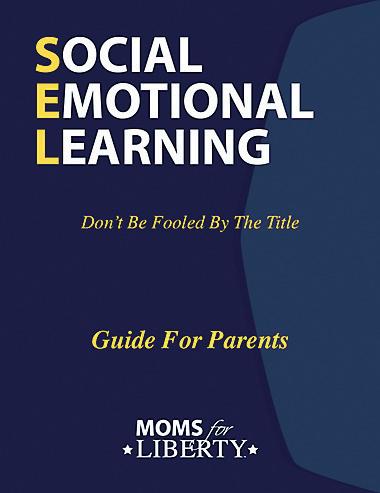
Moms for Liberty’s efforts helped elect 272 school board candidates who campaigned on a platform of supporting parental rights.
In the guide, Moms for Liberty argues that SEL programs indoctrinate children into leftwing ideology, and the guide tells parents how to combat it.
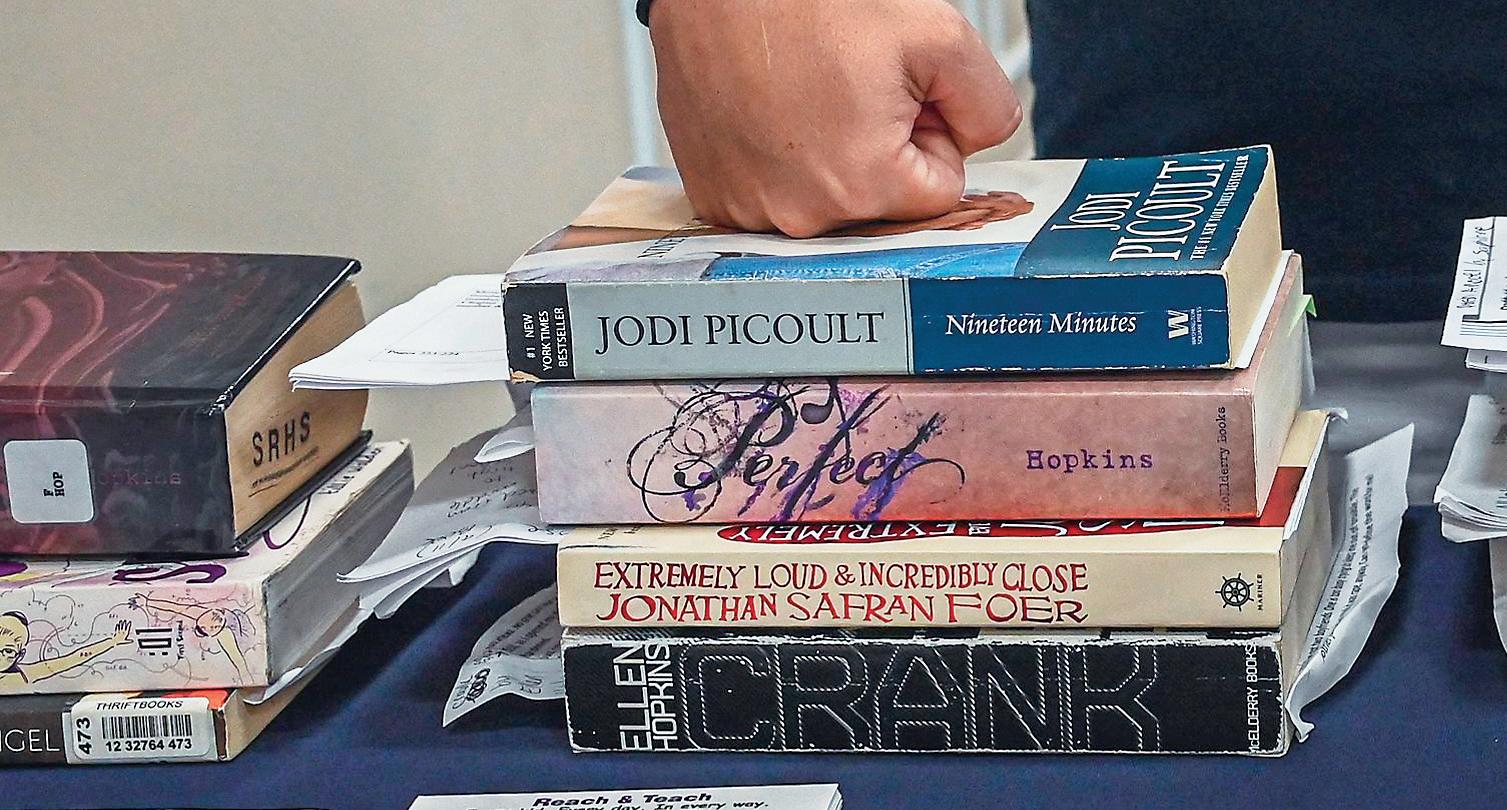
“Social emotional learning (SEL) is an educational method that focuses on emotions, identities, and ideological persuasion,” Moms for Liberty writes in its guide.
Credited for the development of SEL is The Collaborative for Academic Social and Emotional Learning (CASEL). The organization is dedicated to the spread of SEL.
According to CASEL’s definition, SEL is “the process through which all young people and adults acquire and apply the knowledge, skills, and attitudes to develop healthy identities, manage emotions and achieve personal and collective goals, feel and show empathy for others, establish and maintain supportive relationships, and make responsible and caring decisions.”
Both CASEL and Moms for Liberty agree that SEL revolves around a framework with five “core competencies:” self-awareness, self-management, responsible decision-making, relationship skills, and social awareness.
CASEL’s website says equity is “essential” to SEL’s framework and “refers to every student— across race, ethnicity, family income levels, learning abilities, home language, immigration status, gender identity, sexual orientation, and other factors.”
Moms for Liberty argues SEL uses its framework to “shift the values, beliefs, attitudes, and worldviews of students.

“The goal is to psychologically manipulate students to accept the progressive ideology that supports gender fluidity, sexual preference exploration, and systemic oppression.”
By 2016, most public schools had SEL curriculum, the Moms for Liberty guide reads. But in 2020, CASEL updated its definitions for SEL, according to the parental rights group.
CASEL’s new definition pointed to “inequity” as a severe problem. Equity means that every racial group should have the same outcomes, a CASEL teacher workshop video on SEL explains.
For instance, if African Americans get more suspensions on average than white American students, it isn’t equitable, a teacher in the video said.
Moms for Liberty’s guide explains how SEL focuses on teaching radical gender ideology. Its guide argues that SEL redefines the phrases “self-awareness,” “self-management,” “responsible decision-making,” “relationship skills,” and
In SEL, “self-awareness” means being aware of one’s race, gender, and socioeconomic status, the Moms for Liberty guide advises. SEL asks students to see themselves as privileged or oppressed from their identities.
“Self-management,” in SEL teaching, suggests using mental exercises to “control” emotions to “transition to a new set of social norms,” it states.
“Responsible decision-making,” in SEL terms, means making decisions “based solely on if your identity qualifies as privileged or oppressed and what is best for the group (collective) priorities,” it states.
The “Relationship Skills” children are advised to strengthen involve forcing children into relationships with people they disagree with because of the idea that the “mob rules,” Moms for Liberty’s guide reads.
And the “social awareness” teachings of SEL put children on the road to becoming anti-American social justice warriors, the group says in its guide.
By using these categories, SEL intends to “create a new consciousness” in children, so they believe in critical race theory, Moms for Liberty argues.
“SEL transformed the entire education system around CRT as objective truth [not theory],” the Moms for Liberty guide reads.
Parental rights activist Alvin Lui blames the trend for the tide of children’s books flowing into schools that promote “obscenity” and a wide range of sexual orientations.
“Why is it that we’re only seeing the influx of these horrible books over the last three or
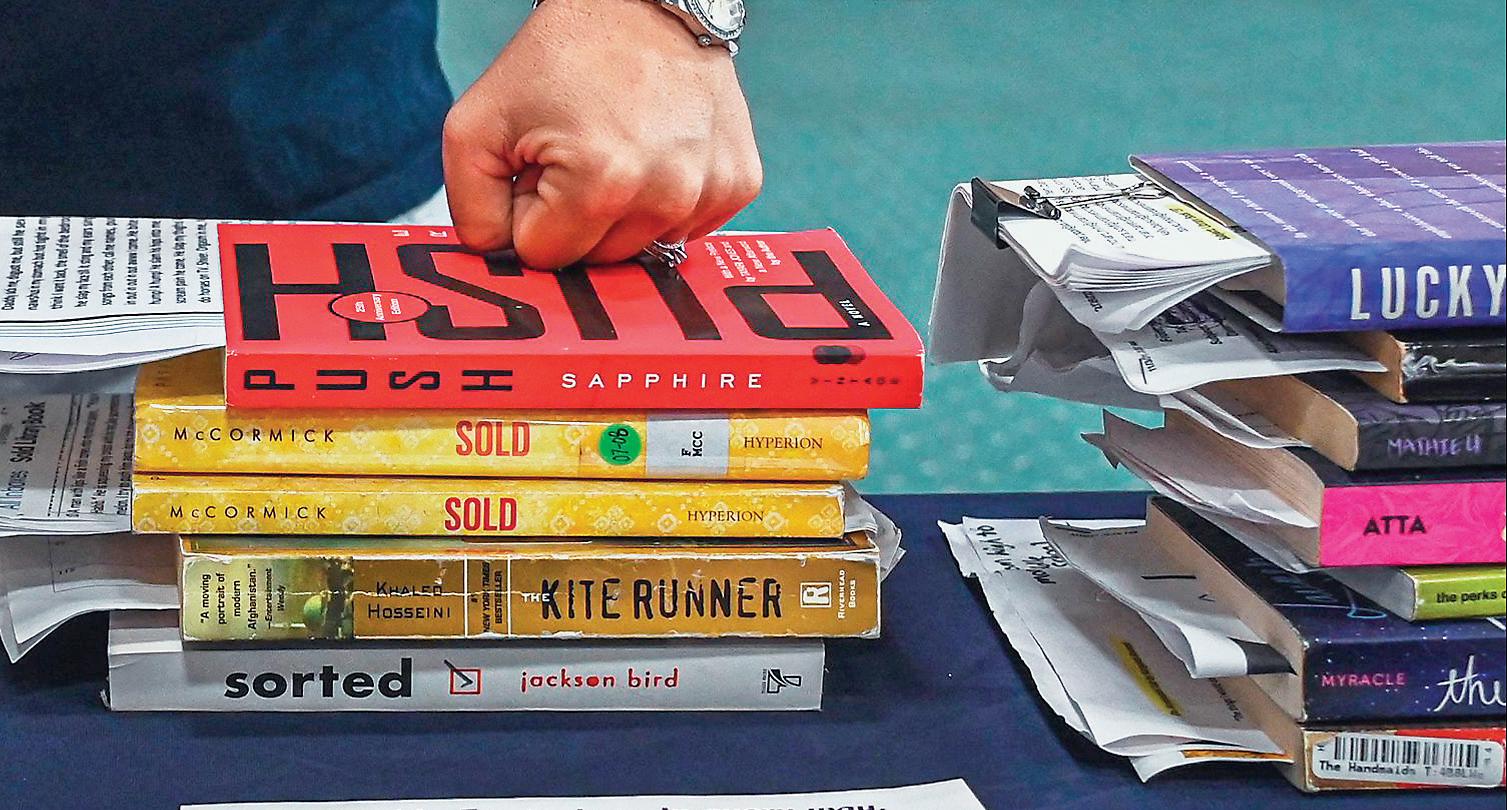
four years?” he asked in an interview with The Epoch Times.
“They’re using [SEL] as a cover to say, ‘Kids need to be represented. If they don’t feel represented, they can’t learn.’”
If all kids need representation, SEL supporters can justify bringing in books on any topic by saying a child might have an experience like the one the book describes, Lui said. That’s how SEL supporters gain acceptance for books for children on transgenderism and LGBT topics.
Some experts say exposing children to these topics often causes confusion and depression, and should be considered child abuse.
The Moms for Liberty guide advises parents on how to fight this system in several ways.
Parents can explain the real meaning behind SEL language to people who don’t understand the term. They also can research and expose the SEL programs currently in use in their schools by asking to review the curriculum. And they can attend school board meetings to ask for a halt to the expansion of SEL programs, the guide suggests.
As parents have learned public schools sizzle with political radicalism, they’ve leaped to retake control, Justice told The Epoch Times.
“If the fundamental right of the parent to their child is ignored by the government, we are facing a very bleak future for America,” Justice said. “These are our children that attend these schools.”
The Epoch Times attempted to contact CASEL for this story, but the organization didn’t respond by press time.
Nanette Holt contributed to this report.
Moms for Liberty has challenged mutiple books on school library shelves, saying they are too sexually explicit or sexually violent.
“The goal [of SEL] is to psychologically manipulate students to accept the progressive ideology that supports gender fluidity, sexual preference exploration, and systemic oppression.”
Moms for Liberty
merican consUmers are reaching for “green” products on shelves more than ever this year while corporations are cashing in on a gold mine. Though evidence suggests that the trend has little to do with helping the environment.

The market for sustainable products and energy was valued at more than $15 billion in 2022. Analysts forecast that number will hit $79 billion by 2030.
However, the eco-awareness movement is little more than a green veneer for some companies. Due to lax regulations, all businesses need is a label brandishing familiar buzzwords such as sustainable, biodegradable, or natural. Then the product—regardless of its actual eco-impact—is unleashed on consumers.
The industry term is “greenwashing,” and dozens of companies have already been exposed for peddling items and services that are anything but eco-friendly.
Yet the duplicity applies to more than just businesses. Research shows that many advocates on the consumer end care more about the social appeal and acceptance of going “green” than the environment itself.
One study on the psychological impact of using “green” products showed that items
It’s often more about social appeal and corporate profits than the environment
People shop at a grocery store in New York on May 31, 2022. A survey showed that of the 62 percent of people who say they want more “green” options, only 26 percent actually purchase them.

that consumers believed to have a reduced carbon footprint led to a spike in perceived value to society. The study authors referred to it as the “green consumption effect.”
But only a handful of the people who expressed that heightened sensation of social value actually buy “green” products.

A survey showed that of the 62 percent of people who say they want more “green” options, only 26 percent actually purchase them.
Some people overlook the possibility of reusing their plastic in favor of buying all-new “green” replacements, a green industry insider says.
“The survey results aren’t surprising. It has long been acknowledged that a significant portion of consumers make purchasing decisions based on the perceived societal value of a product,” Carlos Cen Wu told The Epoch Times.
reducing one’s environmental impact.”
He offered the example of people who opt to replace all their plastic items with alternatives because it’s “greener.” But what happens to all that plastic? Wu says some people overlook the possibility of reusing their plastic in favor of buying all-new “green” replacements.
And while the percentage of people who claim they want more sustainable products—and are willing to pay more money for them—has been growing since 2019, a serious intention-action gap remains.
Some green industry insiders say consumers do little research on alleged eco-friendly products before purchasing them. This contributes to the trend of greenwashing, which analysts say isn’t likely to go away anytime soon.
Wu is the CEO and co-founder of Tallo, a company that offers sustainable personal care products. He says Tallo was born out of frustration with standard industry practices, confusing labels, and harmful ingredients.
He also indicated that true sustainability goes far beyond simple purchases and social appeal.
Wu said for someone to make a lasting, positive impact on their carbon footprint, it “requires a comprehensive examination of one’s consumption habits and a steadfast commitment to
“This behavior may be seen as a way to signal their values to others rather than truly reducing their environmental impact,” he said.
Wu noted that a more effective approach would be to use whatever someone has as much as possible, then replace items with a more sustainable choice as the need arises.
Because for anything to be truly sustainable, the entire lifecycle of an item must be considered. It’s called a life cycle assessment, or LCA, within the industry, which uses a benchmark
Due to lax regulations, all businesses need is a label brandishing familiar buzzwords such as sustainable, biodegradable, or natural for its product to sound eco-friendly to consumers.
product and a complete examination of the item in question—from the design desk to the rubbish bin—to determine sustainability.
But many companies don’t take it that far. Instead, they focus on a single attribute of their product. For instance, does it contain any recycled materials? If so, it can be labeled “green,” regardless of how it came into being or what happens after being in the trash.
In 2022, 18 household names got called out for similar types of “greenwashing.”
Among them were Michelin, fashion giant H&M, internet sensation The Ocean Cleanup project, and music band Coldplay.
At the end of the day, consumers still need to put in the work to support companies that offer truly eco-friendly products.
Though it appears many advocates ar-
en’t walking the talk. One 2022 analysis revealed that just 52 percent of consumers attempt to learn how companies are managing resources and if they practice ethical sourcing for their products.
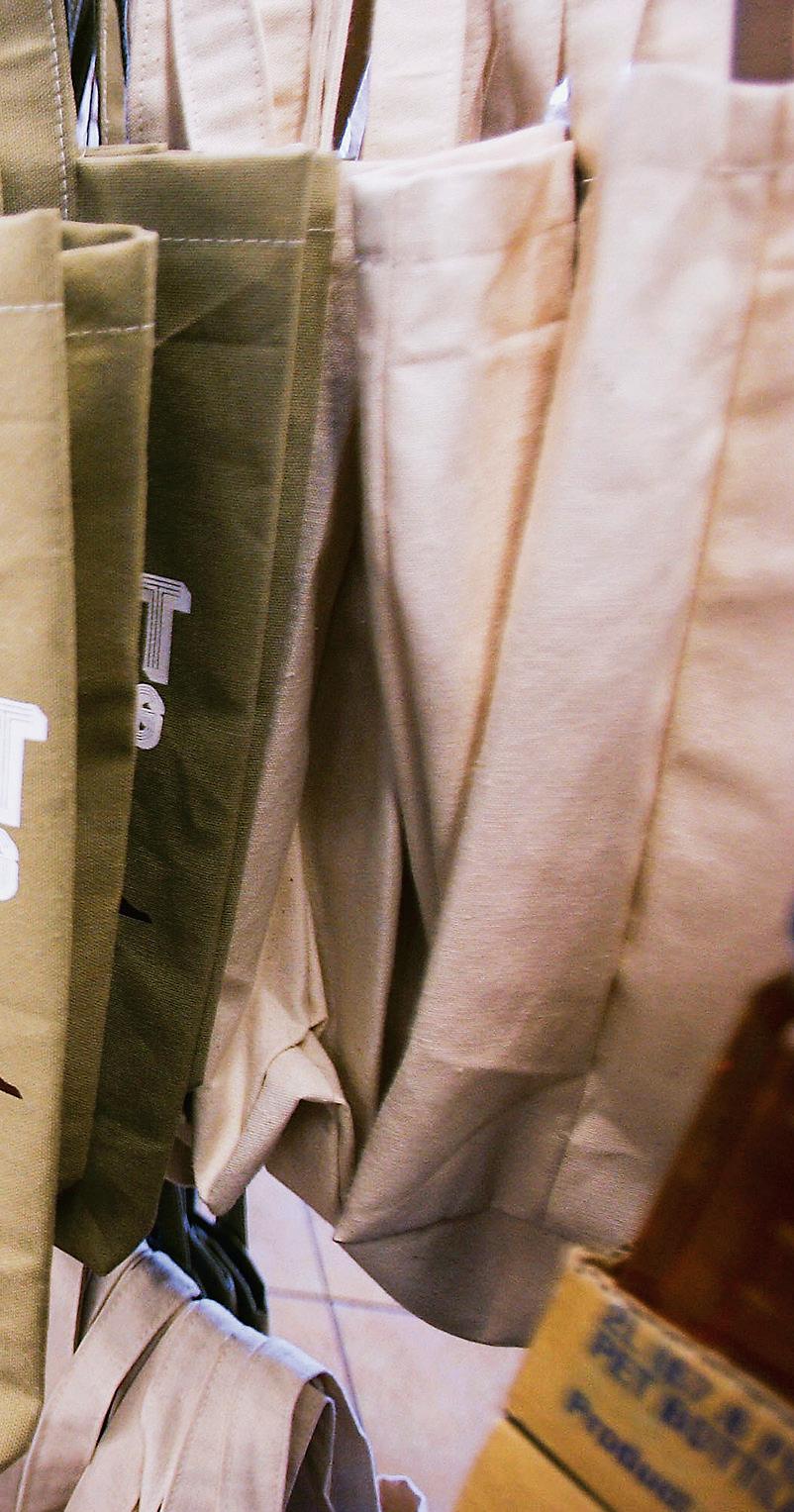
For some green industry business owners, this aspect alone is very telling. Green Lifestyle?
“I think a big test of peoples’ ‘green’ intentions is seeing how much they’ve truly evaluated and combed over their life holistically and either made big changes or not,” Lauren Byington told The Epoch Times.
Byington runs Heal Yes!, which offers organic makeup options for eco-savvy consumers.
Her company was one of the first to put a spotlight on ethical sourcing for mica, a mineral that has long been associated with forced and child labor in some countries. Mindful of the product lifecycle, Byington also uses recyclable or reusable packaging.
And she maintains that all you need to do to determine someone’s level of commitment to living “green” is to look at their lifestyle.
“What about the rich businessperson or politician who is invested in green-focused companies and constantly advocates for solar [and] wind ... but jet-sets weekly, owns multiple massive energy-hungry mansions, [and] wears precious gems, animal-tested cosmetics, and other products that could have been obtained through cruel methods?” she asked rhetorically.
Byington implores consumers to spend time researching company claims before buying products, because “green” labels can be misleading.
She noted that some clean cosmetics companies may qualify for certain
eco-labels, but many of the platforms providing those trusty seals of approval require annual and per-product fees for a product to be entered into a “clean” database.
Supply chain specialist Melanie DiSalvo agrees that consumers don’t put much effort into being as eco-conscious as they’d like to appear.
“If people actually cared about environmental issues, they would focus on reusing what they already have and not wasting,” DiSalvo told The Epoch Times.
Working with more than 200 sustainable fashion startups at her company Virtue + Vice, DiSalvo says a lot of people don’t do real research before buying.
“The average consumer reads a few headlines and then makes the purchase. The problem with a lot of these headlines is that they are from influencers who don’t have any real authority in the space,” she said.
DiSalvo compared it to the old children’s rumor game “telephone.” An influencer hears something from a sustainability expert, makes a few changes, then parrots it back to the media.
“If consumers care about the issues, they should be careful about who they are getting their advice from,” she said.
Byington, Wu, and DiSalvo all believe that the trend of greenwashing will continue until better regulations are in place. As a natural byproduct, purchases based on social appeal likely will also.
Because, as DiSalvo pointed out, environmental awareness has nothing to do with image. It’s about reducing and reusing.
“For example, using an old pasta jar to store dry goods is much more eco than going out and buying all-new mason jars ... but then people wouldn’t get the Instagram photos,” DiSalvo said.
In 2022, 18 household names got called out for similar types of “greenwashing.” Among them were Michelin, H&M, The Ocean Cleanup project, and Coldplay.
A POTTER SORTS CLAY FLOWER POTS
 inside a kiln at a factory in Jalalabad, Afghanistan, on Jan. 31.
PHOTO BY SHAFIULLAH KAKAR/AFP VIA GETTY IMAGES
inside a kiln at a factory in Jalalabad, Afghanistan, on Jan. 31.
PHOTO BY SHAFIULLAH KAKAR/AFP VIA GETTY IMAGES


On the day after the sU preme coU rt overturned Roe v. Wade, dozens of men contacted Iowa Dr. Esgar Guarín. They wanted vasectomies.
“Fifty percent of the patients that I normally see in a month signed up in 48 hours,” he told The Epoch Times.
Even seven months later, vasectomy numbers remain higher than before, Guarín said. He gets about 15 percent more men than usual asking for the surgery that risks permanently taking away their fertility.
“It went down, but it hasn’t gone back down to where it was before Roe v. Wade,” he said.
Some of these men worried that abortion would no longer be available to prevent a child’s birth, Guarín said. Others expressed concern that the Supreme Court would soon make other forms of birth control illegal.

For most of the men, the Roe v. Wade ruling spurred them to take the plunge on a decision they made a while ago.
“They have said, ‘Roe v. Wade made me think about the fact that I ought to do something, but it was in my plans already,’” Guarín noted.
According to research by Stanford University, about 500,000 men get vasectomies yearly in the United States.
Most of the men he operated on were typical vasectomy patients—older than 30 and already with a child or two, Guarín said. But some were younger.
“By younger, I mean less than 30, without any children,” he said. “I saw a bigger increase in the number of patients in their mid-30s, who had already decided not to have any children, but actually had done nothing permanently to take care of that.”
These men didn’t want children but weren’t willing to get a vasectomy. If their significant
others got pregnant, they had abortion as a fallback, Guarín said.
“Some of them clearly expressed their fear that they could no longer fall back onto a termination of pregnancy if the current method of contraception was failing,” he said.
Men getting vasectomies instead of women using abortions or birth control improves medicine, he said, noting that women have borne an outsized share of responsibility for reproduction for too long.

“We can participate in reproduction beyond just procreation,” Guarín said of men. “And we can do it actively with contraceptive decisions.”
It’s unlikely the new wave of vasectomies will have a significant impact on demographics, he said.
“Our mission is not to increase the number of men who have a vasectomy, just for the sake of increasing the number of men who are having a vasectomy,” he said.
Statistics suggest that this trend toward vasectomies may make a few families smaller.
According to research by journal Translational Andrology and Urology, about 20 percent of men who get vasectomies want another child afterward.
With less permanent forms of birth control, a change of mind years later can result in another child. But a changed body presents a greater obstacle.
Only 2 to 6 percent of men have the surgery reversed, according to the journal’s study.
Regret can be a complex emotion, said John Curington, a family doctor who often does vasectomies. People tend to have regrets no matter their decision, he said.
“With any complex decision in life, a human being has regrets,” he told The Epoch Times. “You may have regret about any major decision in life—your house, your partner, anything. However, on the whole, you’re pleased with your decision.”
Curington said he suspects that the rising vasectomy rate will lower U.S. birth rates.
He emphasized that birth control is a choice and that doctors advise couples to consider longterm plans before a man gets a vasectomy.
He also noted that the Roe v. Wade decision was often part of a patient’s choice to get a vasectomy, but never all of it.
“I had zero people who said, ‘The only reason I’m getting a vasectomy is because of the writings of Clarence Thomas,’” he said.
According to Abby Johnson, CEO of pro-life group And Then There Were None, this trend toward

vasectomies shows the irresponsibility of men who support abortion.
“It just feels like men taking an easy way out of responsibility so that they can continue to use women for their pleasure. It feels like it’s continuing objectification of women,” she told The Epoch Times.
Before becoming a pro-life activist, Johnson was a clinic director at Planned Parenthood. When people separate sex from building a family, relations between men and women switch from primarily building relationships to primarily seeking pleasure, Johnson said.
“The primary point of sex is for procreation. And when you remove that, you’re saying to a woman, ‘I just want to be able to have sex whenever I want, with whoever I want. And I don’t want to have to worry about the consequence of having a baby,’” she said.
Johnson said the men who announce their vasectomies in response to the Roe v. Wade ruling are shockingly young.
“All I’ve seen on social media is more of a younger demographic talking about this,” she said.
She added that although doctors often push back when young women demand tubal ligation,
“Fifty percent of the patients that I normally see in a month signed up in 48 hours.”Dr. Esgar Guarín after Roe v. Wade was overturned
the permanent birth control surgery for women, men often make serious fertility decisions at an early age.
Johnson said that many men in their 20s got vasectomies during her time at Planned Parenthood. The consequences were often painful, she added.
“Why are we so willing to throw away a man’s fertility?” she asked.
One couple Johnson knows was strongly liberal and didn’t want children. The man got a vasectomy at a young age, she said. But after a religious conversion, both changed their minds.
“Now, they’re at a different place in their life. They want to have children. And to reverse that vasectomy is over $6,000. And insurance won’t cover it. So now they’re having to look at taking out a loan to reverse his vasectomy that he had in his 20s,” she said.
Ironically, successfully discouraging births might lead to the eventual defeat of the pro-abortion cause, Johnson said. Most pro-life families see children as a blessed part of life, while pro-abortion families see children as a choice, she said.

Long term, this difference means most prolife families get bigger, and most pro-abortion families don’t, she added.
A mobile vasectomy clinic belonging to the practice of Dr. Esgar Guarín in Cedar Rapids, Iowa, in 2021.

“When I worked at Planned Parenthood, the people who I worked with either didn’t have any children, were homosexual and didn’t have children, or they had one child,” Johnson said.
Curington said vasectomy is the approach of a “responsible man.”
“Many guys say, ‘I’m doing this because I’m a responsible guy who wants to make good choices for my family,’” he said.
Compared to tubal ligation, vasectomy is far easier.
“In the United States, for every vasectomy that is performed, there are approximately three tubal ligations,” Guarín said. “I want to see more men having a vasectomy at the expense of reducing the number of women who are getting their tubes tied.”
Compared to vasectomy, tubal ligation costs more, has more side effects, takes more time, and can be undone less easily, according to both doctors.
“When you think about a method, you should choose a vasectomy,” Gaurín said.
Still, while a vasectomy may be easier to reverse, it isn’t a guarantee, according to medical site Healthline.
These facts make it all the more startling that tubal ligations outnumber vasectomies, Curington said.
He attributes this difference to cultural habits. When American women started using birth control pills, most Americans assumed birth control was a woman’s responsibility, he said. But not having a baby involves a man and a woman.
“The history of how people have chosen tubal ligation versus vasectomy has to do with tradition,” he said.
America’s attitude toward having children has changed, Curington said. Once, Americans saw having children as an essential part of being human. Now, it’s an option.
Curington said that a generation ago, people would ask: “How can you even imagine being child-free? That’s just what people do. People just have kids.”
But today, it’s common for a man to enter his office intending never to have a child, he said.
The average American man today becomes a father at about 31, according to a 2017 study by Stanford University. The average American vasectomy happens in the mid-30s, according to another study by Translational Andrology and Urology.
Planned Parenthood declined to comment for this story.
“When I worked at Planned Parenthood, the people who I worked with either didn’t have any children, were homosexual and didn’t have children, or they had one child.”
Abby Johnson CEO, And Then There Were None

The World Economic Forum (WEF) in the alpine resort of Davos, Switzerland, on Jan. 16. The WEF has laid out the latest chapter of its crisis-management plan in its 2023 Global Risks Report.
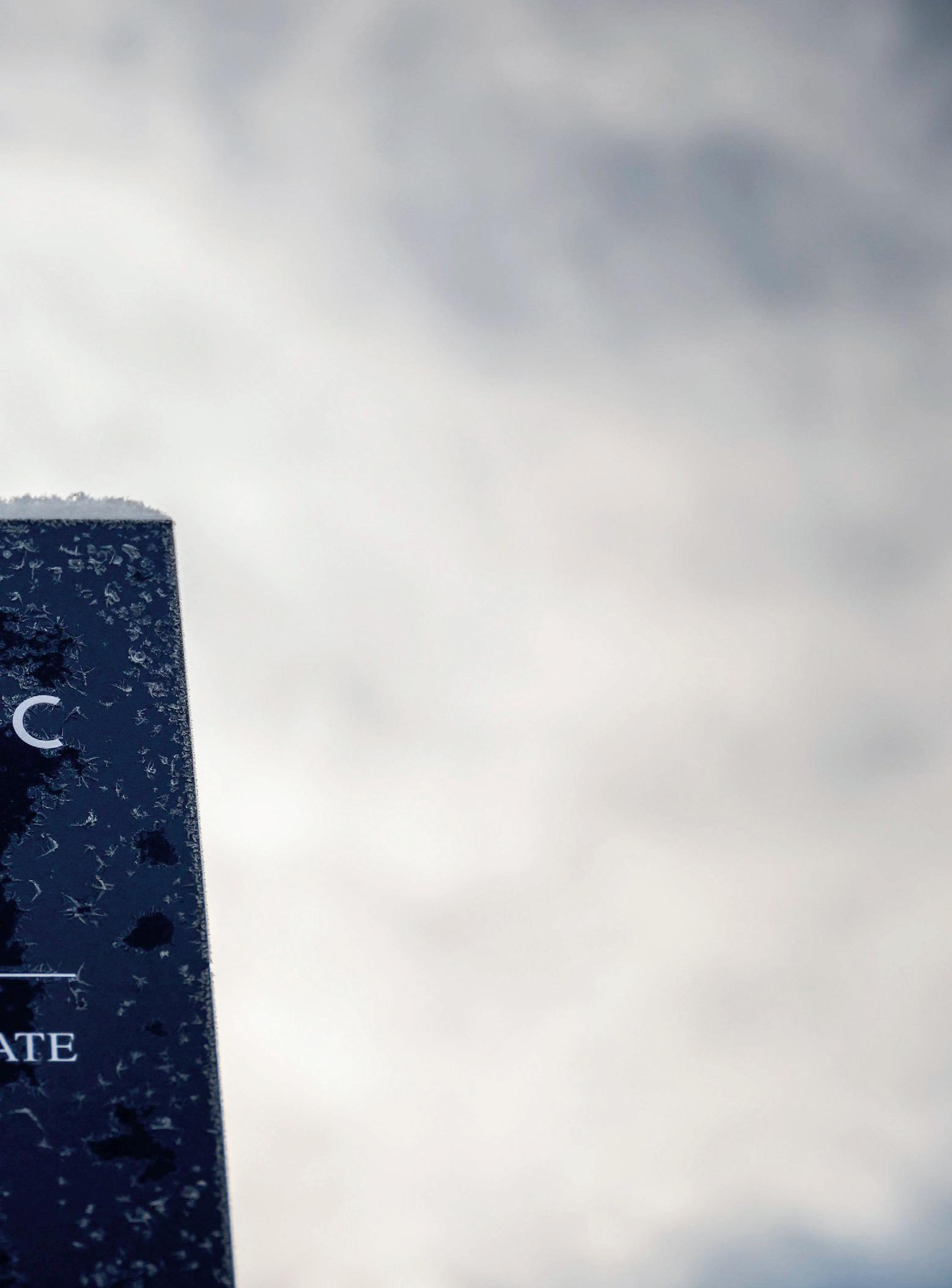
The climate and social j U stice movement is seeking to rebrand itself from a progressive ideology to a prudent tool for risk management. This not only allows it to frame its bleak vision of the future as a safety measure; it also allows its corporate and Wall Street adherents to claim that they’re not pursuing a political agenda at shareholders’ expense but rather managing risk on their behalf.
The World Economic Forum (WEF) laid out the latest chapter of its crisis-management plan in its 2023 Global Risks Report. The report sketched out short-term risks under the heading “Today’s Crisis,” and long-term threats described as “Tomorrow’s Catastrophe.” Topping the short-term list are the “energy supply crisis,” the “cost of living crisis,” and the “food supply crisis”; in the longer term, however, climate change is the apex threat.
Underscoring this narrative, former Vice President Al Gore told attendees that the accumulated amount of CO2 emissions in our atmosphere “is now trapping as much extra heat as would be released from 600,000 Hiroshima-class atomic bombs exploding every single day on the earth. That’s what’s boiling the oceans, creating these atmospheric rivers and the rain bombs and sucking the moisture out of the land.”
U.N. Secretary-General Antonio Guterres echoed these remarks, declaring that the production of fossil fuels was “inconsistent with human survival.”
WEF Founder Klaus Schwab spoke in more pedestrian terms but nonetheless declared that this is a moment of “unprecedented multiple crises.” The WEF has designated 2023 as the “Year of the Polycrisis.”
The Global Risks Report states that shortages of energy and food, and the consequent “cost of living crisis,” are primarily the result of the COVID-19 pandemic and the war in Ukraine. The solution, says the WEF, is accelerating the transition from fossil fuels to wind and solar and reaching “net zero” emissions on schedule, which will help resolve shortages, bring down inflation, and stabilize the climate. But some are skeptical.

“That is downright laughable,” Joel Griffith, a research fellow at The Heritage Foundation, told The Epoch Times. “We know that the inflation that we see right now is a combination of massive money printing—the central banks have had the printing presses on high speed in order to fund massive government expansions over the past 2 1/2 years—and the COVID impact that they mentioned.”
Regarding COVID-19, however, “these are the world leaders gathered [in Davos] that embraced those shutdowns,” Griffith said. “Thankfully, they
did not fully implement net zero; if they would have implemented net zero carbon emissions reductions, the energy crisis would have been even worse.”
A recent survey indicated that 20 percent of Americans are struggling this year to pay their electricity bills, which have increased on average up to 23 percent compared to the prior year. In one of the worst-hit regions, a Massachusetts utility informed residents in November 2022 that their electricity rates would be going up by 64 percent. Conditions in many countries that don’t have America’s abundance of oil, gas, and coal are significantly worse.
Currently, about 84 percent of the world’s energy is generated by oil, gas, and coal. Wind and solar, despite decades of subsidies and regulatory support, still account for less than 5 percent of energy consumed. Despite heavy investments to build wind and solar capacity, their intermittent nature means that they’re useable for generating electricity only about one-third of the time in an average year.
Contrary to WEF predictions, National Geographic reported in 2021 that “disasters related to weather and climate have become less deadly over time.” While warning readers that the trend could always reverse, the report conceded that
“We know that the inflation that we see right now is a combination of massive money printing ... and the COVID impact.”
Joel Griffith, research fellow, The Heritage Foundation
The alpine resort of Davos on the opening day of the annual World Economic Forum (WEF) on Jan. 16. The WEF says that reaching “net zero” emissions will help resolve energy and food shortages, bring down inflation, and stabilize the climate.

over the past 50 years, “the number of deaths tied to those disasters has dropped nearly threefold.”
Analyzing per-capita weather-related deaths from 2000 to 2010, a report by the Reason Foundation stated that “the worldwide death rate from weather happenings has dropped over 98 percent since the 1920s.”
Regarding the “food shortage crisis,” the WEF issued a joint report with Bain & Company, a management consultancy, titled “Food, Nature, and Health Transitions,” which found that “food systems are no longer fit for purpose—they need transforming.”
“Food and agriculture collectively account for more than 30% of greenhouse gas (GHG) emissions and over 80% of deforestation and biodiversity loss around the world,” the report states. Consequently, “every country needs to develop and implement an integrated food systems transformation roadmap.”
The report identified “five dimensions of food system success,” which included not only the goals of producing food but also equity, biodiversity, climate adaptation, and healthy diets. Arguing that farmers, governments, and corporations must collaborate on this transformation, the report noted that diets must also change.
“Consumers in higher-income countries typically choose diets that are too high in foods with large environmental footprints, such as red meat,” the WEF wrote, arguing that governments can shift peoples’ eating habits through a combination of taxation, subsidies, regulations, and “consumer communication.”
20%
mandate, such as the FBI’s new initiative for “climate justice.” One of the more far-reaching measures is a new rule by the U.S. Securities and Exchange Commission (SEC), which was established to protect everyday investors from securities fraud, to fight climate change. The rule requires that all listed companies produce audited reports detailing their CO2 emissions, those of their suppliers, and those of their customers, as well as how they plan to mitigate those risks.
A SURVEY HAS indicated that 20 percent of Americans struggled in 2022 to pay their electricity bills, which have increased on average up to 23 percent compared to the prior year.
84%
CURRENTLY, about 84 percent of the world’s energy is generated by oil, gas, and coal. Wind and solar still account for less than 5 percent of energy consumed.
Asset managers rely on government regulations such as these to justify the view that “transition risk” is among the primary risks facing companies today. BlackRock justified prioritizing climate risk in an August 2022 letter to state attorneys general on the grounds that “governments representing over 90% of global GDP have committed to move to net-zero in the coming decades.”
“Transition risk really boils down to the idea that future changes in law or regulation are going to reduce the value of investments,” Jonathan Berry, a partner at Boyden Gray & Associates, told The Epoch Times. “In one sense, transition risk is a trivially obvious concept—of course, you need to think about the possibility of future legal changes when evaluating the wisdom of an investment—but the SEC and the institutional investors’ use of that concept always points to transition risks that the progressive left specifically cares about.
Taking the WEF’s climate-risk assessment to heart, the Biden administration has transformed all federal agencies in line with President Joe Biden’s executive order upon assuming office that stated, “It is the policy of my Administration to organize and deploy the full capacity of its agencies to combat the climate crisis.” Biden’s directive declared that “we face a climate crisis that threatens our people and communities, public health and economy, and, starkly, our ability to live on planet Earth.”
This has often resulted in federal agencies being directed away from their original purpose toward goals that are often outside their legal
“If transition risks were being used objectively, we would be hearing more about the risk that the United States is going to decouple from China and all of the risks to supply chains that’s going to pose, rather than going to net zero. It’s easier to imagine that we might further distance ourselves from China than that we are going to hasten to actually implement the Paris Accords.”
What Biden called “this incredible transition” to wind, solar, and electric cars will increase our dependence on China, which controls many of the mines where minerals are extracted and has a dominant position in refining those minerals and manufacturing them into batteries, solar panels, and wind turbines. Fossil fuels, by contrast, are plentiful in the United States and can not only supply our energy needs but also supply export markets where other countries are struggling to meet the ever-increasing demand. This could prove an opportunity, rather than a risk.
“The vax can hardly be deemed medically necessary if half of the responding transplant centers are not requiring it,” says a lawyer who tracks hospital transplant policies.
KIDNEY, HEART TRANSPLANT PATIENTS GET THEIR
 PHOTO BY MICHAEL CIAGLO/GETTY IMAGES
PHOTO BY MICHAEL CIAGLO/GETTY IMAGES

THEIR DAY IN COURT WITH MICHIGAN HOSPITAL
BY STEVEN KOVACAm ichigan j U dge will soon decide if 73-year-old Ross Barranco can be denied a donated kidney because he won’t take the COVID-19 vaccine.
“I just don’t see the logic of it,” Barranco told The Epoch Times. “Everybody knows an organ transplant procedure requires the nearly complete suppression of a recipient’s immune system so the body won’t reject it.
“Then why do I need to be immunized against COVID before the operation?”
When asked if he thought the vaccine would make any difference in his prognosis, he replied: “Yeah, the vax can kill me.
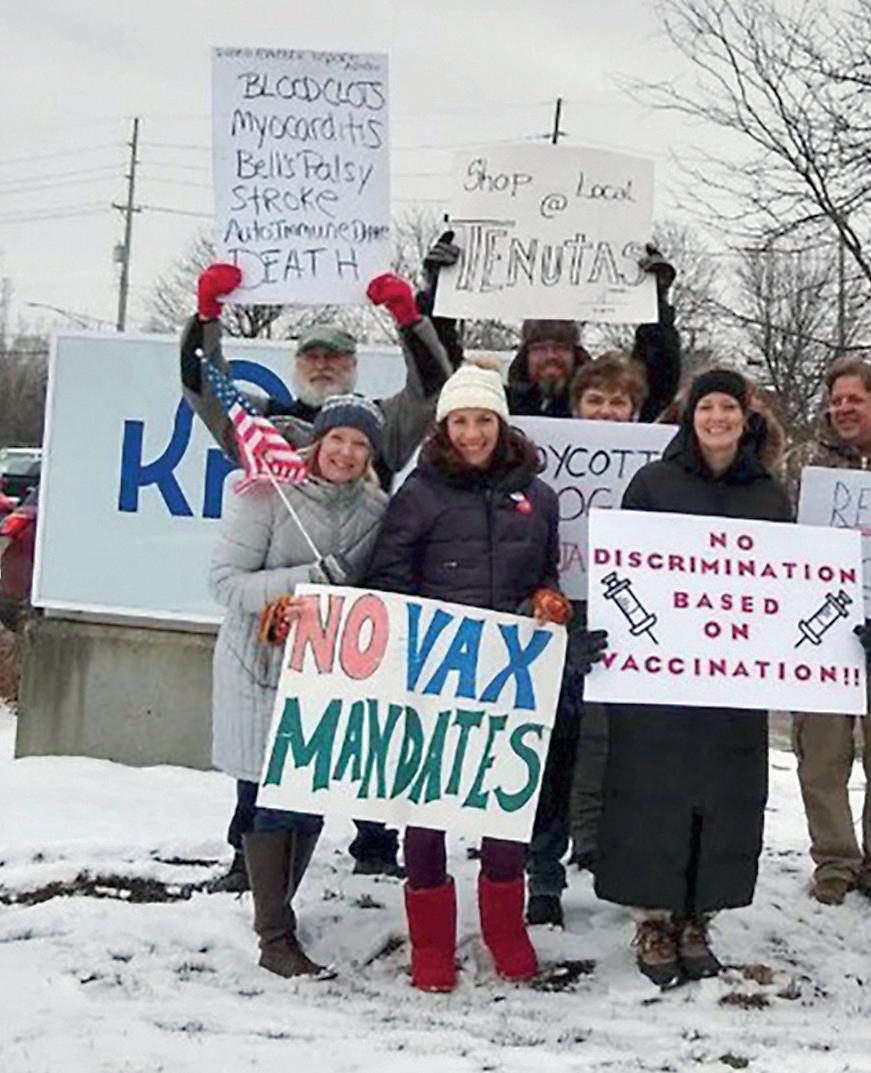
“To qualify for a transplant, both of my kidneys have to be functioning at 20 percent or less. What if the vax destroys the remaining function before the operation? If it does, I’m done.
“The jab does absolutely nothing beneficial for a transplant patient.”
Given the current COVID-19 testing capability, it remains unclear why transplant patients can’t be tested for COVID-19 before the operation. A negative result could then green-light the procedure.
It’s also unclear why the vaccine is still being regarded by some hospitals as an immunization when data shows that numerous fully vaccinated people have contracted the virus multiple times.
Barranco’s legal team made reference to a 2021 survey of 200 transplant centers across the country.
Of the 140 that responded to the survey, only half required transplant candidates to have partaken in a COVID-19 vaccine regimen.
“The vax can hardly be deemed medically necessary if half of the responding transplant centers are not requiring it,” said Deborah Catalano, a lawyer of Liberty Counsel who is tracking hospital transplant policies and is familiar with many similar cases to that of Barranco.
Liberty Counsel is a nonprofit litigation, education, and policy organization dedicated to upholding religious liberty and Christian values.
Medical questions and safety concerns aside, Barranco, a Roman Catholic, refused the vaccine on religious grounds.
He said his faith and conscience don’t permit him to receive a vaccine that he’s convinced was developed using body parts obtained from aborted babies and has fetal tissue in its ingredients.
On Feb. 1, 2022, Barranco received what he perceived as an “ultimatum” from the University of Michigan Health System in Ann Arbor.
“There’s an active list and a holding list for patients awaiting a transplant. At the time, I was on the holding list,” Barranco said.
Ross Barranco, a 73-year-old Michigan patient, is a religious liberty activist.

“That’s when the hospital gave me three months to get three COVID shots, or they would throw me off the list entirely.
“I refused, and they threw me off. That’s when I contacted an attorney.”
Mary Clare Fischer, a public relations representative of the University of Michigan Transplant Center, outlined the hospital’s position in an email to The Epoch Times.
“[Our] policy aims to protect transplant recipients from complications of COVID-19 infection, which has had devastating effects in our patient population,” Fischer said.
“Immunocompromised solid organ transplant recipients have among the highest risk of severe illness or death from COVID-19 infection.
“At present, all of the nearly 1,000 adult patients active on our waiting list are vaccinated against COVID-19 infection.
“As is true of all of our Transplant Center policies and processes, this policy is a critical step
in partnering with our patients to maximize the safety of our transplant recipients and provide them the best opportunity to regain their health and quality of life through the gift of transplantation.”
Fischer stated that the transplant center is one of a “significant number” of U.S. hospitals that require the COVID-19 vaccination for adult heart, lung, liver, pancreas, and kidney transplant patients on their active lists.
The University of Michigan hospital policy exempts critically ill patients who may not have
time to complete the three-phase vaccine protocol, as well as patients with prior vaccine allergies.
Katie Shier, Barranco’s co-plaintiff in the case, is an unvaccinated 35-year-old mother of five who’s a candidate for a heart transplant.
She’s being kept alive by a ventricular assist device that has caused an infection, according to the plaintiffs’ attorney, David Peters of the Pacific Justice Institute.
The Pacific Justice Institute is a nonprofit legal defense organization specializing in the defense of religious freedom, parental rights, and other civil liberties.

The Institute is representing Shier and Barannco free of charge.
Shier, also a Roman Catholic, objects to taking the COVID-19 vaccination on religious grounds.
On June 29, 2021, she was granted placement on the University of Michigan hospital’s transplant waiting list.
The hospital’s subsequently adopted mandatory vaccination policy now precludes her from undergoing the heart transplant necessary to save her life.
Peters told The Epoch Times that, due to the low functioning of Shier’s heart, at any time, she could slip into “imminent or immediate danger and be rushed to the hospital” and maybe qualify for a transplant under the hospital’s vaccination exemption for the critically ill.
“Sadly, it looks like that is something the court will have to order. We have emergency motions ready to go,” Peters said.
Shier told The Epoch Times on Jan. 27: “I’ve been so busy, I haven’t had much time to think about my situation.
“It is in God’s hands. All I want to do is do God’s will. After much prayer, the Lord led me not to give in, but to file the lawsuit.
“I’m fighting for three things.
“The doctors said I have an infection that can only be cured by a heart transplant.
“I believe it’s wrong to require someone to take a dangerous vaccine, so I want to see an end to the mandates.
“And, most importantly, I do not want to take any vaccine or medication that has been
Patient Ross Barranco said his faith and conscience don’t permit him to receive a shot that he’s convinced was developed using body parts obtained from aborted babies and has fetal tissue in its ingredients.
tainted by abortion.
“Two of the major pharmaceutical companies making the vaccine developed it from the HEK-293 fetal cell line.
“Some vaccines are known to have fetal tissue in them, and some tests are being conducted on still-living fetuses without anesthesia.
“I’m fighting for a person’s right to refuse any vaccine that is associated with abortion.”
Peters told The Epoch Times that some people misconstrue the case as a medical malpractice suit against the University of Michigan hospital.
“It is not about malpractice. It is about due process rights,” he said.
“Both Ross and Katie regard UMH [University of Michigan hospital] as one of the best hospitals in the world.
“For that reason, Katie won’t go elsewhere. She wants her new heart to come from UMH.”
Barranco told The Epoch Times that he checked out another transplant center, but he prefers UMH.
A ‘Roller-Coaster’ Ordeal Barranco, a petroleum geological engineer for 46 years, has for decades battled high blood pressure
and diabetes, which he says caused his kidney dysfunction.
In September 2020, he was told to start investigating the various types of dialysis.
“I began talking to [UMH] in 2021,” he said.
“Eventually, they called me in for an in-person exam. They found both of my kidneys were not working right.
“The doctors do not want to remove a partially functioning kidney while it is still contributing, so the plan was to add a third kidney.
“Soon, I was approved to be on their holding list.”
These days, Barranco isn’t easily excited by the ups and downs of his circumstances. In 2016, his hopes for relief plummeted when a blood test revealed he’d contracted an autoimmune disease that attacked his lungs and kidneys. He was placed on chemotherapy, which worked, and he recovered.

“That happened before I could begin dialysis,” he said. “My plan always has been to skip dialysis if I could, because when it fails, as it eventually always does, that’s the end of the line.”
After his recovery, Barranco’s hopes soared again when UMH officially put him on its active list.
and Ron
and their
Katie says that she “believe it’s wrong to require someone to take a dangerous vaccine.”
When his kidneys amazingly began to improve in response to some lifestyle changes, Barranco requested that the hospital drop him back down to the holding list, “so others more in immediate need of a transplant could take my place on the active list,” he said.
He also insisted, against the hospital’s recommendation, that he wait for a cadaver donor rather than a living donor.
“I figured a living donor would be reduced to one good kidney. He or she could possibly die on the operating table or die from post-op complications. It is a risky operation,” he said.
“Or, what if later in life the living donor developed high blood pressure or diabetes with only one kidney?
“There I’d be, doing just fine, but the person who helped me would be suffering. What about him or her?”
Barranco told The Epoch Times that his goal is for there to be no more COVID-19 vaccine mandates, “so that future patients won’t have to go through what I have gone through.”
President Joe Biden issued an order through the Occupational Health and Safety Administration (OSHA) in November 2021 that would eventually result in the denial of organ transplants to unvaccinated patients such as Barranco and Shier.
The federal order mandating COVID-19 vaccinations for health care workers and those professionally associated with them was narrowly permitted to stand by the U.S. Supreme Court in late January 2022.
Just prior to that decision, on Jan. 13, 2022, the high court struck down the Biden-ordered OSHA emergency temporary standard mandating that private employers with more than 100 employees require that their workers receive the COVID-19 vaccines.
It was that February that Barranco received notice from UMH that he had three months to get all three doses or be completely disqualified for a kidney transplant.
“We jumped through all their hoops, and the hospital changed the rules in the middle of the game. They threw us off the active list,” Barranco said.
“For people like Katie Shier and me, the message was clear—get vaccinated or die.”
In May 2022, attorneys from the Pacific Justice Institute filed suit in the Michigan Court of Claims.
They asked Judge Brock Swartzle to order the University of Michigan Board of Regents and the hospital to restore their clients, Barranco and Shier, to the transplant list, along with “all other people similarly situated.”
The hospital’s denial of medical services to the plaintiffs and its alleged refusal to consider their request for religious exemption are the reasons cited for the declaratory relief.

Barranco and Shier’s attorneys are also seeking monetary and compensatory damages for the “severe mental anguish and emotional distress” their clients suffered in the process.
The complaint alleges that the defendants violated the plaintiffs’ right to refuse medications or treatment, as well as their rights to due process, privacy, bodily integrity and autonomy, and the free exercise of their religious liberty.
The plaintiffs’ case is based on the exercise clause of the First Amendment to the U.S. Constitution and its application to the states by the 14th Amendment.
Their pleadings also cite the Michigan Constitution, which reads in part, “The civil and political rights, privileges, and capacities of no person shall be diminished or enlarged on account of religious belief.”
Attorneys for the plaintiffs also referred to Michigan’s Elliott-Larsen Civil Rights Act, which prohibits the denial of public accommodations on the basis of religion.
The act defines “place of public accommodation” as “a business, or an educational, refreshment, entertainment, recreation, health, or transportation facility, or institution of any kind, whether licensed or not, whose goods, services, facilities, privileges, advantages, or accommodations
The University of Michigan hospital has rejected patients Ross Barranco and Katie Shier for spots on the active waiting list to receive a donated kidney.
“[Biden’s COVID vaccine mandate] effectively banned hospitals from exercising their own independent medical judgment in favor of federal agencies.”
David Peters, attorney, Pacific Justice Institute
are extended, offered, sold, or otherwise made available to the public.”
The complaint further alleges that the hospital’s implementation of the vaccination mandate policy was done under pressure from the federal government and isn’t based on the medical needs of the plaintiffs.
“The Biden order effectively banned hospitals from exercising their own independent medical judgment in favor of federal agencies,” Peters told The Epoch Times.
The boards of large research hospitals are very aware of where most of their grant money comes from, Peters said.
“State governments have also been pressured into threatening medical professionals with the revocation of their licenses for noncompliance,” he said.
“Hospitals and doctors need to get back to using their own independent medical judgment based on what is best for each individual patient.”
As of press time, the case is still pending in the Michigan Court of Claims.
“By removing Plaintiffs from the active Transplant Waiting List the University of Michigan Health System and the Transplant Board made a life-ordeath decision without the Plaintiffs’ consent and removed an existing right without any type of due process,” the complaint says.
Plaintiffs also contend that there are no demonstrable, peer-reviewed studies or medical justifications for removing them from the transplant waiting list.
“No such research exists showing that vaccinations are necessary or beneficial for transplant patients,” the complaint says.
The complaint also alleges that the University of Michigan Health System never met with the plaintiffs to make reasonable accommodations for their religious exceptions as required by law.
In a motion for summary disposition, attorneys for the university hospital asked Swartzle to throw out Barranco and Shier’s case.
The university is claiming sovereign immunity, federal preemption, and the failure of the plaintiffs to state a claim as the grounds for dismissal of the case.
According to legaldictionary.net, sovereign immunity “refers to a ruling body, such as the U.S. government, being immune from civil lawsuits or criminal prosecution. ... no one can sue the government without having the government’s consent. [It] comes from British common law, which provided the idea that the King is immune from charges of wrongdoing.”
Sovereign immunity is applied only to the federal and state governments with few exceptions. Federal preemption is the legal doctrine that holds that federal laws are higher than state laws and take precedence over them.
Because the University of Michigan Health System asserts that its transplant program is governed by federal transplant laws, it claims it can’t be sued for alleged violations of the Michigan Constitution or state civil rights statutes and that any legal action would have to be filed in a federal court.
Peters told The Epoch Times that if the case is tossed out of the Michigan Court of Claims, he’s prepared to take it to the federal courts and all the way to the Supreme Court if necessary.
“If I was a patient on a list for an organ transplant, I would not want to go through litigation. Stage four patients may not have time to do so,” said Catalano, senior litigation coordinator at Liberty Counsel.
“There are alternatives to a lawsuit. There are other places patients can go for a transplant.”
Catalano told The Epoch Times that over the past
Guardians of Freedom demonstrators protest against COVID-19 vaccination mandates in Macomb County, Mich., on July 17, 2021.

14 months, Liberty Counsel has had 73 requests for legal assistance from unvaccinated transplant candidates from around the country who’ve been denied the lifesaving procedure they need.
“In our pre-litigation strategy, we first send to a hospital a demand letter, which is mostly informational. That usually leads to a series of communications in which we educate them about the latest developments in medical science and law regarding transplants and vaccine mandates,” Catalano said.
“The medical community has [for] too long been deferential to CDC protocols. As a result of our educational efforts, we are now seeing deactivated patients reactivated without going through litigation.”
Catalano stated that science is changing rapidly and new, clear data are emerging from reputable studies on things such as COVID-19 tests, antibody testing, and natural immunity.
“We suggest hospitals do more individual patient assessments that consider such things,” she said. “Sometimes, we find ourselves reminding health systems to honor their own policies on patient rights, informed consent, and respect.”
Tennessee, by state statute, has outlawed discrimination on the basis of vaccination status, and Texas has done so by an executive order from Gov. Greg Abbott.
“Courageous religious objectors are responsible for making the vaccination mandates unsuccessful and putting patients back in the driver’s seat,” Catalano said.
Barranco told The Epoch Times he felt his case was helped by the 24 supporters who drove 70 miles to attend his first hearing at a courthouse in Lansing.
A citizens group called Guardians of Freedom Michigan (GOFM) conducted a prayer vigil in the building before the proceedings began.
“You better believe the judge noticed them. He not only acknowledged their presence in the courtroom, but went out of his way to explain things to them,” Barranco said.
A 2021 SURVEY of 140 transplant centers across the United States showed only half required transplant candidates to take a COVID-19 vaccine regimen.
Along with Texas and Tennessee, Florida and Louisiana have emerged as destination points for unvaccinated patients from other states who are seeking organ transplants, according to Catalano.
Liberty Counsel researchers have compiled a list of hospitals from nearly a dozen states that it believes have no vaccination requirement or that have granted religious exemptions to transplant recipients.
“About 30 percent of the 73 requesters for legal assistance from Liberty Counsel have never needed a demand letter. Instead, the patients traveled to accepting states to obtain transplants,” Catalano said.
“We are finding that more unvaccinated patients are receiving needed transplants without a lawsuit than with one.
“There is hope. There is a choice. Things can be done. There are places patients can go.”
Some of the success that legal foundation lawyers are having on behalf of transplant candidates around the country is being credited to an informed and active citizenry.
GOFM co-founder Joie Vawter of Walled Lake, who led the prayer vigil, told The Epoch Times: “We support the case that Ross and Katie have against the University of Michigan Hospital for denying their life-affirming transplants because [they] have chosen to decline the experimental COVID shots. Religious exemption ... is first and foremost a God-given inalienable right [and is] constitutionally protected.”
Illona Rugg, a GOFM activist and Barannco supporter whose husband was fired for refusing to take the COVID-19 vaccine after 23 years of service as an Ann Arbor firefighter, said: “It bothers me to see them chiseling away at our freedom. People need to stand up against tyranny.
“Our very lives are being held hostage by the medical-industrial complex.”
As previously reported, hospitals say they’re following recommendations set by the American Society of Transplantation and the United Network for Organ Sharing.
Both organizations list pharmaceutical giant Sanofi, which partnered with Pfizer and Johnson & Johnson in producing the COVID-19 vaccine, as one of their corporate sponsors.
CSL Behring, which partnered with AstraZeneca to produce its COVID-19 vaccine, and Novartis, which partnered with Pfizer, are also corporate sponsors of the American Society of Transplantation.
The United Network of Organ Sharing receives 10 percent of its funding from another active promoter of the COVID-19 vaccine—the federal government.
Alice Giordano contributed to this report.
“Stage four patients may not have time to do [go through litigation].
... There are other places patients can go for a transplant.”
Deborah Catalano, lawyer, Liberty Counsel
DUan j inggang’s life changed forever in 2011 after he held up a banner in China’s southernmost island province of Hainan that challenged “all corrupt dictatorial regimes” to step down.
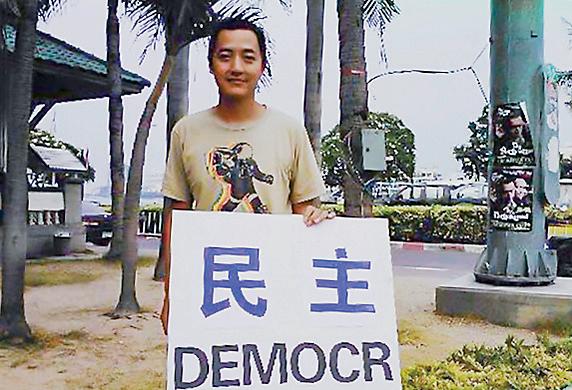
Amid a wave of pro-democracy uprisings in China inspired by anti-government rebellions in the Arab world in 2011, Duan’s defiant sign landed him in a Chinese police station, where dozens of police officers beat and interrogated him during a grueling 24hour session.
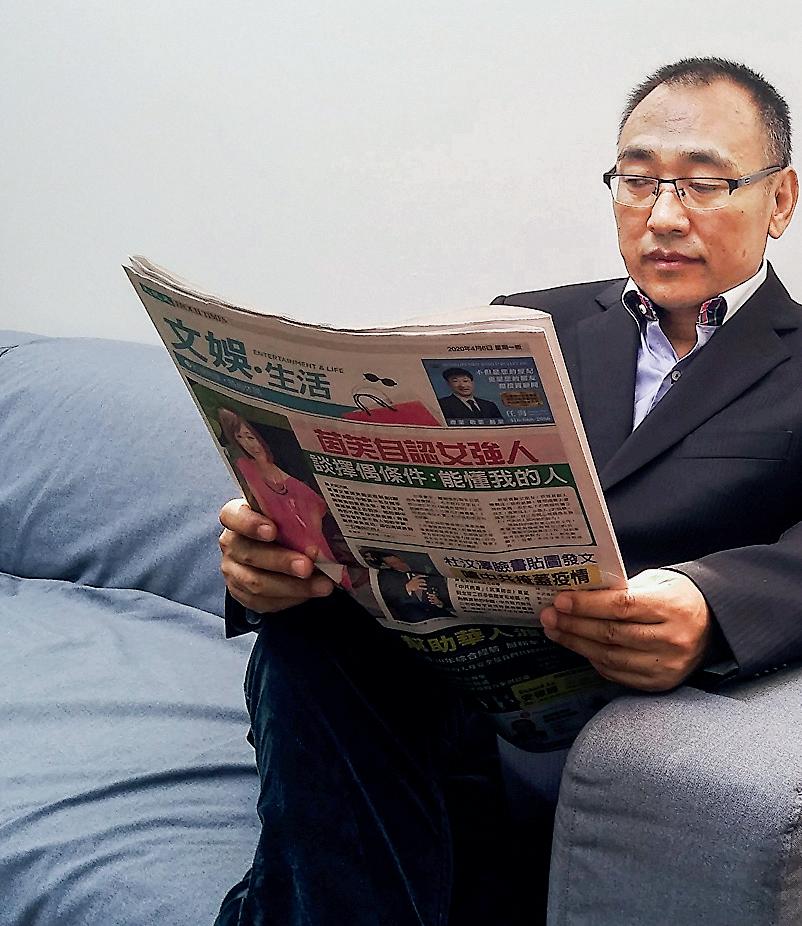
In his frantic journey for safety that followed, Duan scaled mountains on the China–Vietnam border, and was left homeless and destitute wandering around Southeast Asia, desperate to find a place for refuge. For weeks, he spent his nights on a straw mat in the hallways of a Buddhist temple in Cambodia, where the cold breezes frequently shook him awake.
Often, he had only one meal a day from whatever alms the monks shared with him.
Eventually, Duan would traverse more than half a dozen countries in a bid for asylum—which didn’t come until Sweden opened its arms to him a decade later. The
sense of desperation at one point drove him to swim five hours to Singapore from Malaysia, while wearing slippers and using a Chinese-made swimming ring to prop him up at times of exhaustion.
He felt he was going to die when his skin touched the water.
“I really don’t want to do this,” he recalled thinking at the time. “Why do I have to suffer like this?”
Duan found an answer in a recent essay, “How Humankind Came To Be” by Mr. Li Hongzhi, the founder of Falun Gong, a spiritual practice that features meditative exercises and ancient values centered on
the principles of truthfulness, compassion, and tolerance.
In the article, Mr. Li writes that the purpose of one’s existence isn’t for achievements, but rather to mitigate one’s karma or sins.
“When a person, amidst painful experiences, still manages to keep kind thoughts, have gratitude, and be a good person, he or she is growing through it,” he wrote. “It is certain that going through hardships can help people to atone for their sins and karma. And anyone who manages to stay good-natured amidst painful situations and interpersonal troubles is going to build
(L–R) Duan Jinggang fled China after beaten by the police for advocating for democracy. Zhao Zhongyuan, a doctor of Chinese medicine, says that one’s level of comprehension is limited by his or her own capacity.
Zhao Xin was imprisoned at least seven times for his pro-democracy activism in China.


“There’s little that one can see with the eyes, so what’s not seen isn’t necessarily nonexistent.”
Zhao Zhongyuan, doctor and Buddhist
up merit and virtue and, as a result, will achieve the elevation of his or her soul.”
The idea that one can acquire inner strength through suffering is a message that stood out to Duan, who has been a Christian since his teenage years.
“It’s like steel,” Duan said. “The many times of tempering is what makes it invincible.”
From antiquity, suffering has been an ever-present theme across faiths. Jesus was nailed to a cross, and early Christians faced waves of hostility before the faith came into prevalence. In communist China, the estimated 100 million adherents of Falun Gong became state targets of sweeping persecution in 1999, causing millions to suffer from detention and torture, and an untold number of victims have died from systematic forced organ harvesting.
“History is like a cycle,” Duan said.
Zhao Xin, a student leader during the 1989 Tiananmen Square protests who is now based in the United States, was detained and imprisoned at least seven times for his activism, during which he was tortured many times to the verge of death.
He found Mr. Li’s insight into human existence eye-opening, especially with regard to the human connection with the divine.
“Be it in China or elsewhere, even the accomplished monks and sages from ancient times haven’t been able to answer these fundamental questions,” he told The Epoch Times. “How did this universe come about? Why do human beings exist? None could answer. And barely anyone has touched upon what human beings are doing in this society.”
After studying the article for several days, Zhao, also a Christian, believes that one should approach it with openness whether or not it aligns with the conventional ideas he or she holds.
“There’s so much we don’t know,” he said. “We need to acknowledge the limits to our lives, our understanding, and our capacity.”
Meanwhile, Zhao Zhongyuan (who has no relation to Zhao Xin), a doctor of
Chinese medicine popular among Chinese politicians and military officials in Beijing, echoed the activist’s view by pointing to the ancient medical system that he practices.
Often, people dismiss Chinese medicine as being too enigmatic and insist they can only believe what they can see. But he argues that one’s level of comprehension is limited by their own capacity, and suggested that people should not so casually dismiss Mr. Li’s words without taking a step back to consider the limitations of humans’ perceptual capabilities.
from their dreams.”
According to Mr. Li, the universe goes through the process of “formation, stasis, degeneration, and destruction,” the same way as people are subject to “birth, aging, illness, and death,” and that the human world is currently in the last period of the destruction phase.
“This is a warning bell to people,” Ye, also a Christian, told The Epoch Times. “If anyone doesn’t strive for kindness and inner improvement, but continues to commit evil, there isn’t much time left for you.”
Since World War II, Ye said he has seen the human moral standard declining at an accelerating pace.
“We see the explosive growth of high technologies and the dizzying technological revolution,” Ye said. “The new discoveries and inventions allowed people to live a life of material abundance, but the spiritual and moral standards have gone into free fall.”
The influence of Chinese communist totalitarianism is partly to blame, he said, “but it’s also not a China problem alone—it is the chaos on the eve of destruction.”
“The way Chinese medicine works is by feeling a patient’s energy channels, which is something you can’t see or touch. But Chinese medicine is nonetheless effective,” Zhao, a Buddhist, told The Epoch Times.
“There’s little that one can see with the eyes, so what’s not seen isn’t necessarily nonexistent. The light spectrum visible to the naked eye is very narrow; so is the range of frequencies one can hear.”
Ye Ning, an attorney in New York, read Mr. Li’s piece three times on the night it was published on Jan. 20, to mark the Chinese New Year. He called the article a “powerful dose of medicine that wakes people up

The warning message also resonates with Wang Jing, a Chinese dissident now based in the United States who runs a website dedicated to China’s human rights.
Wang became a petitioner seeking justice for her sister, who was fatally stabbed at the age of 19 while working at a state oil firm. The years of fruitless effort left her disillusioned with the Chinese regime and motivated her to help fellow Chinese defend their rights.
To Wang, the warning in Mr. Li’s article is that the choice between kindness and evil is also a matter of life and death.
“Even if people die, they still have souls. And when people enter the destruction phase, the Creator will only keep those who are kind,” Wang told The Epoch Times. For her, this means putting others’ needs before her own, even at the cost of her own safety and security.
“There’s so much we don’t know. We need to acknowledge the limits to our lives, our understanding, and our capacity.”
Zhao Xin, Christian
Perspectives
The U.S. oil and car industries are getting the short end. 59
Tech opportunities abound amid the challenges facing the economy. 60
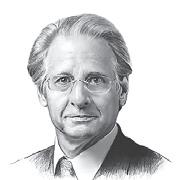


A staff member stands in a projection of live data feeds at the Big Bang Data exhibition in London on Dec. 2, 2015.

Exports of Chinese-manufactured automobiles have tripled since 2020
device that can track and transmit long-term movements was found during a security sweep of a UK government vehicle used to transport senior officials and diplomats, it was reported last month; the SIM card was located within a sealed part imported from China.
Because of warranty terms and commercial agreements, the parts are installed without being opened, so there’s no knowing what spyware is inside.
A security expert told the Daily Mail it could mean that both Chinese and Russian intelligence agencies are tracking UK officials.
Chinese firm China Unicorn, which is responsible for the parts and is under U.S. sanction, is relied on for 5G capability by some very familiar auto brand names—BMW, Jaguar Land Rover, Volkswagen, as well as Volvo, which since 2020 has been a subsidiary of China’s Zhejiang Geely, which is based in Hangzhou in eastern China.
It turns out that not only does the Chinese Communist Party (CCP) know where its global rivals are going, but at an alarming rate, China is exporting the means by which more and more of the world travels. Exports of Chinese-manufactured automobiles have tripled since 2020 to more than 2.5 million in 2022, according to the China Passenger Car Association. That places the Chinese mainland above the United States and South Korea, and behind only Japan on the list of the world’s biggest auto exporters.
As Bloomberg noted on Jan. 26 in a story titled “The US Hasn’t Noticed That China-Made Cars
the World,” Chinese brands now dominate the market in the Middle East and Latin America. In Europe, China-made vehicles are mostly electric models from Tesla Inc., and the once-European but now Chinese-owned Volvo and
MG, plus European models such as the Dacia Spring and the BMW iX3, are produced exclusively in China.
It added that “a raft of homegrown marques like BYD Co. and Nio Inc. are ascending as well, with ambitions to dominate the world of new-energy vehicles.”
some Nazi or Soviet spy ring of the last century, to being found “lining the I-75 manufacturing corridor from Michigan to Georgia” making “a range of components including glass, suspension systems, bearings, airbags, tires, sealing parts, anti-vibration components, batteries for electric vehicles, instrument panels, stampings, magnesium die-cast components, and power steering systems.”
Lest you wonder where the capital is coming from to empower China to take over the car world, you can find quite a bit of it originating in the good old USA. The Tesla-like EV, battery, and solar panel maker BYD has long been a pet project of Warren Buffett and his Berkshire Hathaway Inc., having invested some $232 million in BYD in 2008.
Today, BYD is selling Chinese electric cars in a market as lucrative as Australia, and Buffett has made a fortune from that.
China’s appearance as an auto export giant didn’t happen overnight, and it had a massive, quite visible presence in the United States going back years. More than four years ago, ex-president of General Motors Indonesia and former J.D. Power managing director for China Michael Dunne, author of “American Wheels, Chinese Roads,” wrote that there were no fewer than 51 Chinese automakers, suppliers, and auto-tech firms operating in America in early 2016—which by the time of Dunne’s writing in late 2018 had “more than doubled to 105.”
Dunne reported that these Chinese entities went from being hidden, like
It has been hypothesized that instead of pursuing a historically conventional regional path to global military dominance, Beijing is instead “building a new Chinese-led security and economic order across the Eurasian land mass and Indian Ocean, while establishing Chinese centrality in global institutions,” as national security adviser Jake Sullivan and Johns Hopkins foreign policy historian Hal Brands discussed in Foreign Policy magazine in 2020. Success in doing so would amount to “outflanking the U.S. alliance system ... by developing China’s economic, diplomatic, and political influence on a global scale.”
What exactly is China up to?
Sullivan isn’t the only foreign policy observer on the Democrat side of the aisle who sounded a warning. In early 2019, Brookings Institution fellow and Obama national security official Tarun Chhabra wrote that “Beijing’s ‘flexible’ authoritarianism abroad, digital tools of surveillance and control, unique brand of authoritarian capitalism, and ‘weaponization’ of interdependence may in fact render China a more formidable threat to democracy and liberal values than the Soviet Union was during the Cold War.”
Communists have wised up since offering Americans the laughably inferior Yugo in the mid-1980s. Beyond hiding tracking devices, cars are a new step in Beijing’s use of authoritarian capitalism to shift to a new, CCP-led global economic order.
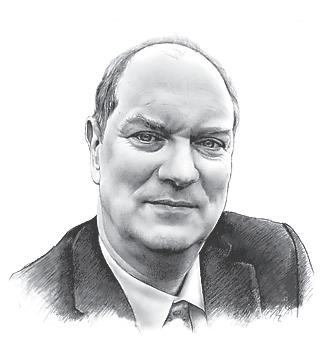
Beyond hiding tracking devices, cars are a new step in Beijing’s use of authoritarian capitalism to shift to a new, CCP-led global economic order.
ANDERS CORR is a principal at Corr Analytics Inc., publisher of the Journal of Political Risk. He is an expert in political science and government.

US oil and car industries are getting the short end
Since 2020, c hina’s electric vehicle (EV) makers have been on a streak.
Other vehicle manufacturers are starting to look nervously in their rearview mirrors, err ... cameras, and in some cases, sideviews. Some, such as Volvo, are even looking at their stock and realizing that a Chinese competitor has already bought a controlling share.
Is China’s growing EV dominance an example of the so-called cooperation with China on global challenges such as climate change? Does the Biden administration deserve to ballyhoo it all as another shining example of U.S.–China cooperation?
No. Beijing is the world’s worst polluter and an existential threat to democracy. It uses its weak environmental regulations and lousy labor policies to outcompete U.S. car manufacturers on price. Every dollar that China makes can be turned by Beijing into military aggression and human rights abuse, up to and including genocide.
By allowing EV makers to outsource production to China from the United States, Europe, Japan, South Korea, and other allied countries, consumers in advanced democracies may be getting cheaper cars now. Still, they will pay in the long run when China monopolizes the supply chain.
The Chinese Communist Party (CCP) could, for example, pressure the United States by stopping the shipment of vehicle batteries. Russia attempted something similar against Europe by stopping the flow of natural gas shortly after the start of the Ukraine war. Beijing had used such pressure before, when it stopped the shipment of rare earth elements, necessary in a broad range of manufacturing, to Japan in 2010. It didn’t work in either case, but Moscow’s belief that it had leverage because of Europe’s gas dependence
likely figured in Russian President Vladimir Putin’s decision to invade Ukraine.
A second advantage handed to China in the world’s switch from gas is that EV engines are simpler than the gas and diesel engines they replace. Gone will be the comparative advantage that higher-skilled engineers and workers in market democracies had.
EV supply chain is battery manufacturing. BYD has it covered. China manufactures 56 percent of all EV batteries, and the CCP will put China’s EV makers first in line.
BYD outsold Tesla in 2022 and already sells electric cars and buses in Europe. Buying the Ford plant in Germany “would give BYD a stronghold for further expansion on the continent,” according to the Journal.
A third advantage to Beijing from the world moving away from oil is that China has very little of it. The United States has a lot, so the shift is particularly painful for relative U.S. economic strength.
“The switch to battery means the motor is no longer a differentiator,” Alexander Klose, an officer at a Chinese EV manufacturer, told Bloomberg. “It’s created a level playing field.”
The article, published on Jan. 25, had the headline, “The US Hasn’t Noticed That China-Made Cars Are Taking Over the World.”
In 2021, Japan led in passenger vehicle exports, Germany and China were neck-in-neck for second place, and the United States and South Korea trailed behind.
Since 2020, as the EV revolution hit, China is gaining fast. The output of all its competitors is either stalling or, in the case of the United States, falling.
Japanese car companies are slow out of the blocks to pure electric from hybrid vehicles. According to Reuters on Jan. 23, “Lapping them are Chinese firms, which appear best-positioned to keep their pole position, both at home and internationally.”
On Jan. 24, The Wall Street Journal reported that Ford was in talks to sell one of its plants in Germany to BYD, China’s biggest EV maker.
The tightest choke point in the
China’s defeat of America’s oil and vehicle industries, after so many others have already gone, will put downward pressure on good American jobs. Industrial cities will atrophy more than they already have. Crime and drug use will rise. Governments from the local to the national levels will lose tax revenue. Fewer dollars will go to social and defense spending.
Into that power vacuum, repeated in democracies around the world, the CCP will step.
According to a Jan. 24 article published by The Heritage Foundation, “China is engaged in an economic war with democracies around the globe and America must stay energy-independent. ... If electric vehicles overtake the internal combustion engine, America should not cede its energy independence to China or other unfriendly nations.”
This is the reality of the cheap, shiny electric cars that make us feel great about saving the planet in so much style that our neighbors shrink with envy. But that wilting won’t stop at the neighbor’s fence. We will all diminish together as the CCP’s power grows.
Our best defense is decoupling from China, including when we buy an EV.
Every dollar that China makes can be turned by Beijing into military aggression and human rights abuse.
MILTON EZRATI is chief economist for Vested, a contributing editor at The National Interest, and author of “Thirty Tomorrows” and “Bite-Sized Investing.”
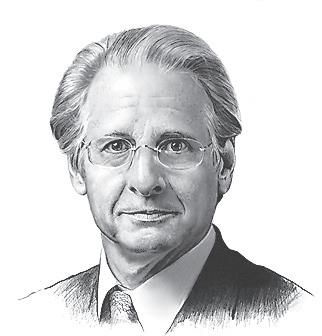
Tech opportunities abound in the challenges facing the economy
These days, the word “tech” typically brings to mind the internet, apps, and social media. It’s only reasonable. These aspects of technology have come to dominate daily life for many. But technology is a whole lot broader than social media or even the internet, and it’s poised to revolutionize how the entire economy works.
The best way to anticipate where the change will occur is to consider those areas of economic life that cry out for technological solutions. The need for more resilient supply chains, for example, will demand data sharing, constant communication, and coordination, things that cloud computing offers. Opportunities in fintech are another, especially in insurance, where fewer inroads have been made to date.
The health care field, which needs to provide critical services more effectively and cheaply, looks like another area in which tech can provide answers and accordingly make gains. There’s also every reason to believe that tech will play a role in helping the economy cope with an aging population and with today’s great anxiety: climate change. The picture is far from clear. The future never is. But outlines are visible.
This first part of a two-part series on the future of tech will take up data needs, communication, fintech, and health care. The next article will take up matters of the aging population and climate change.
Cloud computing and 5G networks lie at the center of much of this. One will create more reliable internet access, while the other will introduce greater flexibility and access to cutting-edge applications. Until recently, firms relied on in-house software for their production, distribution, and accounting needs. With reliable cloud computing, however, they can access continuously updated applications
more cheaply. The “cloud” should also ease the impediments that in-house software imposes on the need for easy communication, data sharing, and coordination. All will provide the flexibility needed to establish more resilient supply chains, for example, a need that became painfully clear during the pandemic and its initial recovery period.
“insurtech,” this technological push will—as in investing, banking, and lending—broaden access, manage risk more effectively and efficiently, and streamline processes that today can take an extended time. As in banking and lending, this technological push will bring joint ventures between established firms and tech startups.
Building 5G wireless networks will require a considerable investment. For cloud computing to offer the advantages it promises, it will need to invest heavily in cyber protections and upgrade them constantly. Otherwise, its answers will too readily expose its users to privacy incursions, theft, and other disruptions. These outlays will strain finances. The expense will undoubtedly lead to fewer, larger providers than presently exist. But business needs are so great, and the potential returns so large that those involved will manage these vast outlays.
On the financial side of the economy, algorithm-based solutions have already invaded investing and lending. This so-called fintech revolution has offered investors new ways to use their assets and manage risk. It has streamlined lending decisions and helped borrowers find where they’re most likely to secure credit. Prior to the tech invasion, much of this was left to happenstance, luck, or protracted searches.
Now, this kind of revolution is poised to occur with insurance. Dubbed
Health care is an area that truly cries out for technological assistance and accordingly offers tremendous opportunities. Rising medical costs threaten just about every developed economy on Earth. Many nations, especially those with broad public health care systems, rely on triage and rationing to hold down costs. These unpleasant options make for a powerful public demand for another solution. Tech strengths, once focused, can play a big role in bringing those preferred alternatives to life.
The communication abilities of technology can, for example, help with both preventative care and monitoring patients with chronic problems and do so in more effective and cost-efficient ways than presently. Algorithms can save doctors time and attention by offering preliminary diagnoses and broadening the field in which nurse practitioners can operate. Still, more imaginative answers will emerge in time. No doubt, some of this aid will require legal changes. And since much will depend on cloud computing, the need for good cyber protections will be essential to protect privacy. But the opportunities should ensure that those involved attend to these needs.
This is only an outline of the needs and how technology can respond, but it should give an idea of where things are going. The next article will take up tech’s role in the still more complicated areas of demographics, especially the growing proportion of older people in the population and in answering the multifaceted needs of climate change.
Algorithms can save doctors time and attention by offering preliminary diagnoses and broadening the field in which nurse practitioners can operate.

The country will lose a significant portion of its population, an expert says
China, the world’s most populous country, has reached a turning point in history as it recently announced its first population decline in 60 years. China analysts predict severe problems for the world’s second-largest economy, owing in part to its shrinking population.

According to Beijing critics, the Chinese Communist Party (CCP) has spent decades attempting to boost domestic scientific and technological innovation by any means possible, including theft. However, they believe that China’s goal of overtaking the U.S. economy by the 2030s or 2050s is now a pipe dream.
The country’s National Bureau of Statistics reported a population decline of roughly 850,000 to a total of 1.41 billion in 2022. This is the first drop that the regime has officially reported since 1961, the final year of the country’s Great Famine, which was estimated to have killed at least 40 million people.
Some estimates suggest that China’s current population decline could be higher than reported due to rising COVID-19 death tolls.
Even under the most optimistic scenarios, China will lose a significant portion of its population, according to Gordon Chang, a distinguished senior fellow at the Gatestone Institute and author of “The Coming Collapse of China.”
When fertility rates and other factors are considered, “China will probably lose about two-thirds of its population between now and 2100,” Chang told The Epoch Times.
“That’s about a billion people,” he said. “So, I don’t know how any society can withstand that.”
When the CCP noticed the dwindling population, it abandoned its one-child policy in 2016, replacing it with a twochild limit. Despite the change, China’s birth rate has continued to decline. The birth rate in 2022 was the lowest on re-
cord, dropping to 6.77 per 1,000 people from 7.52 in 2021.
According to Christopher Balding, an expert on the Chinese economy and a former professor at HSBC Business School of Peking University, China’s population drop isn’t shocking. He also believes that the decline began nearly five to seven years ago, and the CCP is finally recognizing it.
However, the collapse of the working-age population is a bigger issue than the overall population decline, Balding told The Epoch Times. The share of the working-age population, which includes 15- to 59-year-old individuals, has fallen to 62 percent from more than 70 percent a decade ago.
China will miss out on the rapid economic expansion that’s generally enjoyed by countries with a young population, he noted, saying that India and Vietnam, both of which have very young demographics, are likely to be key beneficiaries of China’s population collapse.
“China is not going to be the consumption golden goose that we expected it to be,” Balding said.
Beijing is aware of these challenges and has invested heavily in technology in recent years in an effort to avert a grim outlook for the economy.
There are already signals of weakness spreading across the economy: Trade activity is down, inflation is slowing, and new bank lending is tumbling. And this is despite Chinese authorities defying global trends by implementing monetary and fiscal easing this year. The stimulus measures aren’t having the desired impact since domestic demand remains subdued.
In 2022, China’s economy grew at one of its slowest rates in decades. Many media sources and experts attribute this weak economic performance to repeated lockdowns that hit households and businesses.
With the population decline, “China is on a trajectory to become poor,” according to Antonio Graceffo, China economic analyst and an Epoch Times contributor.
“China is in a situation that we call ‘old poor,’ which means that as much as we tell China’s economic growth is being exceptional, China is really still a poor country,” he told The Epoch Times.
Normally, countries can compensate for declining birth rates through money and technology to preserve their quality of living, as seen in Taiwan, Korea, Japan, and the majority of Western Europe, he explained. However, China has never caught up to the developed world.
“China got stuck in this low-end manufacturing,” he said, noting that the notion that the country is shifting into high-end manufacturing is untrue.
“I don’t believe China will surpass the United States.”
China will miss out on the rapid economic expansion that is generally enjoyed by countries with a young population.

Official unemployment and hidden unemployment differ greatly
The latest jobs report in the United States shows strengths and weaknesses. Total nonfarm payroll employment increased by 223,000 in December 2022, and the unemployment rate fell to 3.5 percent. However, the U.S. job market continues to show negative real wage growth, the employment-to-population ratio is 60.1 percent, and the labor force participation rate is 62.3 percent.
According to the Bureau of Labor Statistics (BLS), both measures have shown little net change since early 2022 and each remains 1 percentage point below their values in February 2020.
The U.S. jobs figures are constantly dissected by analysts, and there’s a healthy criticism in independent research, which certainly helps enormously when it comes to understanding the health of the labor market. However, in the European Union, things are much worse.
The latest unemployment figures are very concerning, but what’s even more worrying is when you analyze “shadow unemployment.” In its latest Economic Outlook for Europe 2023–24 report, UBS shows the significant difference between official unemployment in the euro area and the hidden unemployment coming from furloughed jobs and unoccupied workers who don’t count as officially unemployed.
The official unemployment rate in the euro area is still elevated, at 6.5 percent. The highest unemployment rate is in Spain, at 12.4 percent, followed by Greece, at 11.4 percent, and Italy, at a much lower 7.8 percent.
Youth unemployment is also extremely elevated. European Union average youth unemployment stands at 15.1 percent, led by Spain at 32.3 percent, Greece at 31.3 percent, and

Italy at a distant 23 percent. However, shadow unemployment in the euro area, according to UBS, stands at 8.8 percent, with Spain at 15 percent, Italy at 8 percent, and Germany well above 5 percent compared with the official 3 percent.
There are diverse ways in which European economies leave unoccupied workers out of the official unemployment rate. These include deducting from the unemployment figure those who aren’t working but are receiving training, zero-hour contracts, mini jobs, and those who have a long-term contract but only work a few months. They don’t appear as unemployed even if they have access to unemployment benefits.
However, we want to look at these figures as they show the mistakes of a heavily intervened in and rigid labor market. The first source of rigidity is labor costs. The high social security and labor taxes make it more
challenging for businesses to reduce unemployment. The tax wedge on work is so elevated in countries such as Spain or Greece that a business pays almost 1,800 euros for a 1,000 euro net salary. If we add to a high tax wedge a string of regulatory burdens and penalties, it shows that a system designed to protect workers is, in fact, leaving millions behind, particularly the young.
Europe’s furloughed jobs scheme was widely praised as a great way to protect workers during the misguided lockdowns of the COVID-19 crisis. While it certainly reduced the official unemployment rate, shadow unemployment rose to 21.7 percent. In the United States, a very flexible labor market still saw unemployment rise to 14.7 percent in April 2020. However, in the United States, the re-opening led to a rapid reduction with faster wage growth, while in the euro area, wage growth remained poor and continues to be negative in real terms.
While in the United States real wage growth has declined 1.1 percent, according to the BLS, in the euro area the nominal figure in the third quarter of 2022 was just 2.1 percent wage growth, which means a 6.8 percent negative real figure.
There are many different challenges that need to be taken into account, and comparisons are always difficult, but there’s an undeniable negative trend in Europe that’s a direct consequence of constantly increasing intervention in the economy: elevated youth unemployment, much higher unemployment in rigid labor markets compared with more flexible ones, and a concerning trend of destruction of the purchasing power of salaries.
My friends in the United States should take note. If you copy European economic policies, you get European unemployment and real wage levels.
There are diverse ways in which European economies leave unoccupied workers out of the official unemployment rate.
FAN YU is an expert in finance and economics and has contributed analyses on China’s economy since 2015.
When valuations are normalized, ARK funds may be back in favor
Growth investor Cathie Wood, CEO of ARK Investment Management, has endured a lot of criticism for the investment performance of her funds in 2022 and her unbridled evangelism of technology firms.
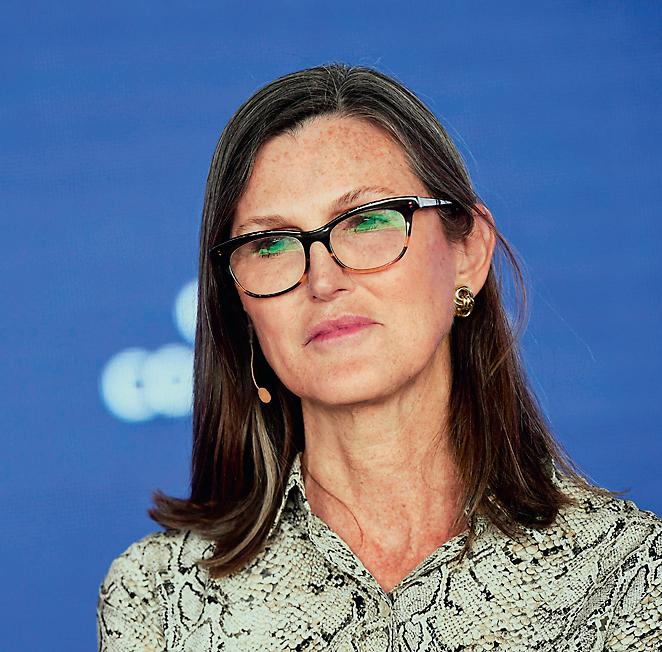
Wood’s biggest fund, the ARK Innovation exchange-traded fund (ARKK), declined 67 percent during 2022. Comparatively, that’s twice the negative-33 percent return of the Nasdaq 100 during the year. The fund also recorded the worst performance among its peers in the Mid-Cap Growth category at Morningstar.
The fund, which counts among its portfolio investments Zoom Communications, Tesla, Block, and Teladoc Health, saw net outflows of $600 million during the last five months of last year. ARKK once was a pandemic darling, more than quadrupling during 2020. But many of its holdings have low profits and were hammered during the last year amid high inflation and high-interest rates.
Wood has a lot of critics. Many of them believe she is too enamored with tech and growth companies in this environment, where the consensus investment positioning lies in value factors, defensive stocks, and fixed-income strategies. Daniel Loeb, CEO of hedge fund Third Point, for example, called Wood a “stonk hodler” on Twitter, comparing her to unsophisticated online retail traders following memes and YouTube videos. (The term “stonk hodler” is used to tease online traders who cling to their positions regardless of what is happening in the market.)
Wood, who also is ARK’s chief investment officer, isn’t deterred, though. She is doubling down on these technology investments, claiming that they are “disrupters” of incumbent industries and are the future. In Wood’s view, the companies in ARKK
are investing in research and development and new technological innovation instead of paying dividends and making share repurchases today. In other words, they’re sacrificing current earnings for future, exponentially larger earnings potential.
But we think the criticism of Woods is misplaced.
ARK funds shouldn’t be viewed as a one-stop shop, all-weather investment strategy for investors. They should be looked at as existing within a portfolio for what they are: high-growth investments. “When advisors and others buy into our strategies, they’re looking for pure-play innovation,” Wood told Barron’s magazine, an investment-focused publication.
Looking at ARK Investment’s website, the company offers six actively managed ETFs:
• ARK Innovation ETF
• ARK Next Generation Internet ETF
• ARK Fintech Innovation ETF
• ARK Autonomous Tech. & Robotics ETF
• ARK Genomic Revolution ETF
• ARK Space Exploration & Innovation ETF
Glancing at the holdings of each, it’s obvious that all ARK funds seek to invest in companies engaged in developing innovation, disruption, and future technologies. Very few of them are profit-making or pay dividends. ARK doesn’t manage any funds outside the scope of these technology-focused, technology-adjacent, or technology-servicing companies.
But this isn’t a column to shill for ARK funds. The ARK Autonomous Tech. & Robotics ETF (ARKQ) was down more than 40 percent during 2022. Investors in this fund would have lost more money than if they had invested in the Nasdaq Composite or the S&P 500 Index, both of which also suffered losses.
Such losses were more or less unavoidable for ARK. Wood and ARK’s mandate is to invest within the scope of these areas. The critics are off base— Wood shouldn’t suddenly start investing in the energy sector or consumer staples. It’s not ARK’s mandate.
Instead, it’s incumbent on the investor to allocate a lot, a little, or nothing to technology and growth sectors during this period of high-interest rates and market volatility (right now, the answer may be a little or nothing).
When valuations decline enough, these growth companies could see their stock price increase again.
An investment in high-growth firms should be looked at with a five-to-10year horizon. When valuations are normalized, ARK funds may be back in favor. After all, why aren’t we criticizing venture capital firms for continuing to invest in speculative startups in this environment?
ARK funds shouldn’t be viewed as a onestop shop, all-weather investment strategy for investors.
L“iving people are killed for their organs,”
Dr. Torsten Trey says.
“This is arguably the biggest violation of medical ethics in history.”
Sixteen years ago, the first whistleblowers emerged from China with a story
that few could believe: The Chinese communist regime was killing Falun Gong practitioners for their organs. What have we learned about this horrible practice since that time? And is it continuing today?
In a recent episode of “American Thought Leaders,” host Jan Jekielek spoke with Trey about these issues. Trey
is co-founder and executive director of the nonprofit Doctors Against Forced Organ Harvesting, which has just released a special report, “Forced Organ Harvesting From Living People in China.”
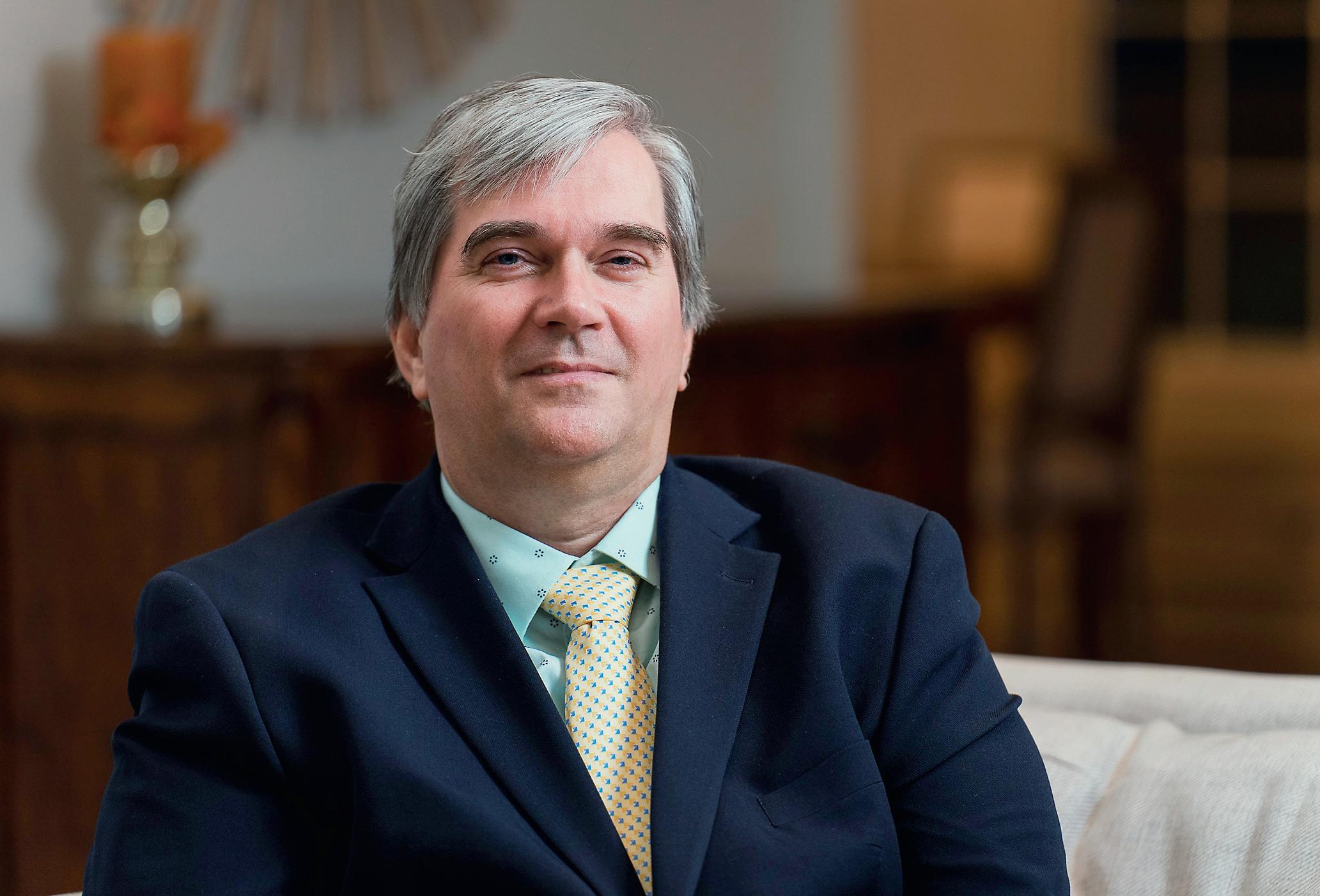
JAN JEKIELEK: In 2006, a small nonprofit began called Doctors Against
Forced Organ Harvesting, and you were one of the co-founders. Before we go any further, please lay it out for our viewers: What is forced organ harvesting?
DR. TORSTEN TREY: Forced organ harvesting is the forceful extraction of organs used for transplantation. This
“Forced organ harvesting is the forceful extraction of organs used for transplantation. ”Dr. Torsten Trey, co-founder and executive director of Doctors Against Forced Organ Harvesting.
bypasses the typical way of giving consent before you donate an organ. Living people are killed for their organs, and it’s happening on a large scale in China. This is arguably the biggest violation of medical ethics in history
MR. JEKIELEK: Where did the idea to start this nonprofit come from?
DR. TREY: In 2006, I learned from The Epoch Times that witnesses from China were coming forward. In a hospital in Sujiatun, organs or tissues were being harvested from Falun Gong practitioners.
Two months later, I saw that the vice president of the European Parliament, Edward McMillan-Scott, had followed that case, too. He went to China and met with two Falun Gong practitioners who told him they’d seen a friend who died in detention with holes in his body. That was another piece of evidence.
Then, David Kilgour and David Matas conducted phone interviews with Chinese doctors saying they’d taken organs from Falun Gong practitioners. So in July 2006, I attended the World Transplant Congress in Boston, thinking maybe I’d find some more hints. There, I talked to two doctors from China.
One of them was from the Tianjin hospital. He said in 2005, they’d performed 2,000 liver transplantations, which was an astronomical number. And this was in just one hospital in Tianjin.

Next, I talked to a doctor who was invited to China to open a transplant department. I asked, “Where do all
those organs come from?” And he said, “They’re coming from Falun Gong practitioners.”
At that point, I decided there must be more investigation and awareness. That’s how the founding of Doctors Against Forced Organ Harvesting came about.
MR. JEKIELEK: Give us a broad picture of the evidence that now exists.
DR. TREY: There’s evidence related to the transplant numbers, where the organs come from, how they’re donated, and witnesses coming forth. Over time, we followed the number of transplants, and those numbers in China are just out of proportion.
In 2020, for instance, Dr. Chen Jingyu wanted to perform a double lung transplant on a COVID patient, and within one day, they got the match and performed the transplant. This is unthinkable in the Western transplant environment. It seems like organs are coming on demand to
facilitate transplants on demand. The wait time in China is usually between two days and 14 days, which is incredibly short.
A team from South Korea with a hidden camera filmed a nurse who was accommodating patients from Korea. The nurse was saying, “Yes, it usually takes two weeks to get a kidney, but if you pay $10,000 extra, you can get it within two days.” This is unheard of, that because of an extra fee, you can accelerate the wait time to two days.
Then, there are the donor numbers. For 18 months, we monitored a website where the numbers of organ donations were displayed. There was a gradual increase of registered organ donors, and then all of a sudden, at the end of 2015, within one day it increased by 25,000—exactly 25,000. It’s unheard of that all of a sudden there are exactly thousands of that many new registered donors.
We saw this again the following year when 88,000 people were added to the
so-called registered organ donor pool. You don’t find this in other countries.
If you take all of this together, then you have an overwhelming set of circumstantial evidence. Each piece itself might not be strong, but if you put everything together, there’s enough evidence to conclude something is wrong.
MR. JEKIELEK: The China Tribunal comes to mind, which offered one of the most comprehensive bodies of evidence. I believe you testified there. What were the conclusions?
DR. TREY: The China Tribunal took about a year to review the different reports. They listened to 50 experts in two hearings. It was an objective, independent, and thorough review of the evidence. They concluded that forced organ harvesting takes place in China and that the main victim group is Falun Gong practitioners.
With this information, you can’t just go back to business as usual and continue scientific exchanges with personnel and doctors in China. There should be a pause to review the evidence.
MR. JEKIELEK: I remember when Dr. Jacob Lavee was the head of the Israeli Transplant Association. He had a patient who told him, “I’m going to China to get an organ.” He went and got it quickly, and Lavee recognized there was no way this could be ethical.
He advocated for laws to be passed in Israel where the state health system
wouldn’t pay for such transplants, basically discouraging people from doing it. Maybe you can tell me, has there been a significant response from any country other than Israel?
DR. TREY: There has been some response. The U.S. Congress has passed several resolutions acknowledging the forced organ harvesting, and the European Parliament did as well. But those are non-binding steps without really taking responsibility to stop this transplant abuse. They aren’t strong enough to send a signal to China that says to stop it. We observed over time that this is not only happening in governments, but also in organizations where the information we provide is blocked at a certain level of leadership.
And I assume this block at the leadership level is a reflection of pressure and influence from the Chinese government, where the government says, “Do you want to come to our country for certain conferences? Then don’t bring it up. Do you want to be ostracized from our conferences? Then don’t bring it up.”
MR. JEKIELEK: Tell me where you see the hope here.
DR. TREY: Probably the
most discouraging times for me are when doctors in the free world take the side of the Chinese government and trivialize forced organ harvesting. The most encouraging are when I talk to other doctors and they understand it, and they support me. Those moments energize me and give me the motivation to continue.
MR. JEKIELEK: You’ve written quite a number of papers and a couple of books on this. What would you say is your most important contribution?
DR. TREY: Probably an article titled “Cold Genocide: Falun Gong in China.” It was the first time I understood
that forced organ harvesting isn’t an isolated violation of medical ethics, but that it had a purpose, and the purpose was to destroy Falun Gong practitioners. I compared the student massacre in 1989, which was really obvious to the world, to the unperceived persecution of Falun Gong, and I thought, “What is the difference here?”
The Chinese government learned from the student massacre that they needed to proceed with less intensity and more slowly. So you have a cold genocide. It can happen over years without being noticed because it’s too slow to trigger an international reaction.
If you think of this slow-moving destruction and then expand it to other areas, you see that China is slowly infiltrating and influencing our society. Universities, for example, can’t have forums critical of China because they don’t want to lose thousands of Chinese students. This infil-

tration is everywhere.
MR. JEKIELEK: Our new film, “The Final War,” talks about a lot of these things and how there’s been this hundred-year plan to subvert America. In the face of all this, what can the typical person do?
DR. TREY: If we want to defeat forced organ harvesting, we have to break the silence. If the people would learn more about the persecution of Falun Gong and bring it to social media, the silence would be broken. And if medicine isn’t able to stop forced organ harvesting, then what will happen to the medical profession? The goal of medicine is to help a patient, to save a life. But if someone is killed to provide a cure for others, then medicine is at a crossroads. I believe that every doctor needs to look into this.
This interview has been edited for clarity and brevity.
“And if medicine isn’t able to stop forced organ harvesting, then what will happen with the medical profession? ”

It’s not climate change. It’s not raging inflation or even the national debt. The real threat to the United States and to the world is the Chinese Communist Party’s (CCP) 100-year plan to defeat America and establish world domination. There’s no urgency in the Mainstream Media. That’s why “THE FINAL WAR” had to be made. Anchored by senior investigative reporter Joshua Philipp, and one-and-a-half
years in the making, “THE FINAL WAR” is a film that is so relevant to current events and so important that we’re offering it to EVERYONE for free. It will answer your questions about the pandemic, the impending invasion of Taiwan, and how the CCP works to keep the U.S. occupied with at least four global adversaries.
See the film. Know the danger. Be prepared. “THE FINAL WAR” is already underway.
Search online for “Americans are lazy workers” and a cluster of articles pops up. Some of them deny that claim, while others declare it valid. A few writers also point out that this accusation is decades old, while those who disagree argue that today’s employees are in fact much lazier than in days gone by.
The latter group provides a variety of reasons for this perceived indolence. Today’s workers, they say, want to work less and play more. They lack incentives to put out extra effort. Some of them resent serving employers or customers, some regard their job as meaningless, and some simply dislike work in general.
Along these same lines, the media has recently reported growing numbers of “quiet quitters,” men and women who do no more than necessary while on the job, such as refusing to work late to finish a task. In some cases, quiet quitters go a step further and aim to do the least amount of work possible.
Is quiet quitting an actual movement? That question remains up for debate. In his November 2022 article “What Is Quiet Quitting—and Is it a Real Trend?” Greg Daugherty reports mixed conclusions, first citing a Gallup poll in which 50 percent of Americans describe themselves as giving only the minimum effort to their jobs. He then introduces other data,
however, that indicate little change in worker attitudes from decades past. Often neglected in all this backand-forth is the idea of a work ethic. What sort of spirit and effort should workers and their supervisors bring to a task? What constitutes a high bar for performance in the office or on a job site?

toiling away from early morning until evening, mowing, weeding, eradicating worm mounds, and precisely clipping the walkway. By dusk, the lawn is immaculate.
When Thurman asks for $5, the astonished countess inspects the yard and then compliments him, remarking that his efforts to overcome the impossible had driven him to give every ounce of energy and talent to the job. He has conquered the $5 barrier, and that day’s work bestowed on Thurman a work ethic that he then carried into adulthood.
In his 1958 “Reader’s Digest” article, “The Countess and the Impossible,” Richard Thurman narrates a story from his youth in which an elderly European woman with old-world manners settles in Idaho and hires the 13-year-old Thurman to mow, clip, and weed her lawn. A mediocre job, she says, is worth $3, an outstanding performance earns a dollar more, and “a five-dollar lawn is—well, it’s impossible, so we’ll forget about that.”

She then tells Thurman, “Each week, I’m going to pay you according to your own evaluation of your work.”
For the next few weeks, Thurman does a $3 job. Each time, he resolves to aim at the $4 mark, and each time he fails. And then, a revelation strikes. He decides to go after the $5 lawn. That day, he exhausts himself
Today’s American work ethic may need some oxygen, but it’s nowhere near dead. Plenty of people familiar to me—the woman who puts in long hours coping with an understaffed office, the contractor who knocks himself out supporting his wife and four small children, the servers at the coffee shop—bring their best efforts to the workplace. If they’re in charge, like the countess, they offer incentives and challenges to their employees. If they’re employees, like Richard Thurman, they throw themselves completely into the task at hand.
We all have our metaphorical lawns to tend. Let’s aim for the $5 job and show the world what we’ve got.
Jeff Minick lives and writes in Front Royal, Va. He is the author of two novels, “Amanda Bell” and “Dust on Their Wings,” and two works of nonfiction, “Learning as I Go” and “Movies Make the Man.”
Today’s American work ethic may need some oxygen, but it’s nowhere near dead.
A pair of tugboats pull the SS “Kroonland” through the Cucaracha slide, heading south along Culebra Cut on the Panama Canal, on Feb. 2, 1915. Construction of the Panama Canal was begun by the French in 1880, but after they abandoned it eight years later, at President Theodore Roosevelt’s urging, the United States took over, overseeing it until 1999.

EVER SINCE THE RECIPE appeared in a 1930s book of cocktail recipes, the martini has garnered fans ranging from Ernest Hemingway to James Bond. 75
IT’S SAID THAT BEER WAS accidentally created in prehistoric times, going on to become one of the world’s favorite beverages, with true fans brewing their own. 76
FIELD WATCHES WERE created for use by soldiers in World War 1. Rugged and reliable, they’re now a practical choice for urban adventurers. 79

Sit Uated in montecito’s coveted Hedgerow neighborhood, this historic cottage with an impressive pedigree features a charming pool house, all set on an oversized, beautifully landscaped lot.


Designed by acclaimed architect Harriet Moody (1891–1966), creator of the iconic Storybook Cottages in Santa Barbara, this five-bedroom, six-bath residence features a bit more than 4,700 total square feet of living space— much more than expected from a “cottage.” Originally constructed in 1940, the residence and its pool house have recently been lovingly restored and upgraded to better-than-new condition. The bright, open, and serene layout features the soaring vaulted ceilings that Moody was known for, as well as cozy fireplaces, built-in bookcases, and numerous other features that create an air of quiet relaxation.
The residence is surrounded by an acre of manicured landscaping, while the interior features a very large, airy, restaurant-grade kitchen accented by a custom skylight, stain-

less steel appliances, and a meal preparation island with casual dining seating for four. A cozy breakfast nook is set off to one side of the kitchen, with a formal dining room adjacent. The living room’s ceiling has exposed beams, and the fireplace is welcome on chilly evenings. Dual master suites are located on opposite sides of the ground level to ensure privacy, while two bedrooms with vaulted ceilings are located upstairs, all with private baths.
Outside, a large brick courtyard with a summer kitchen overlooks the recently renovated and upgraded pool and nearby hot tub. The one-bedroom, one-bath pool house provides an additional 500 square feet of very private living space. Lush lawns wrap around the property, with mature oaks and fruit trees dotting the lawn to provide shade and a resort-like ambiance. The property’s garage provides secure storage for two vehicles. Montecito’s Upper and Lower Villages are a short drive away.
HARRIET MOODY COTTAGE MONTECITO, CALIFORNIA
$9.5 MILLION
• 5 BEDROOMS, 5 1/2 BATHS
• 4,710 SQUARE FEET
• 0.79 ACRES
FEATURES
• POOL HOUSE AND POOL
• FAMOUS ARCHITECTURE
• RECENTLY RENOVATED AGENT
SOTHEBY’S INTERNATIONAL REALTY/MONTECITO/ COAST VILLAGE ROAD BROKERAGE
DUSTY BAKER, DUSTY BAKER GROUP (805) 570-0102
The colossal undertaking of the Panama Canal produced a wonder of modern engineering

Perhaps the most vital waterway on earth, the Panama Canal slices through a little more than 50 miles of lush, Central American rainforest, dividing two continents. Located at one of the narrowest points of land in the Americas, the importance of the opening of the canal in 1914 can’t be understated. It literally shaved weeks off often-hazardous ocean voyages.

Previously, ships would have to sail “around the horn,” down at the bottom of South America. Proceeding around Cape Horn, these vessels were routinely rocked by the infamous winds and waves of the Drake Passage, one of the world’s most tempestuous stretches of sea.
Now, maritime traffic passes easily back and forth here, gliding without drama between the Atlantic and the Pacific. Gunmetal-gray water flows between verdant shores, disappearing into dark mountains. The Bridge of the Americas links the two sides. Nearby, Panama City rises, endless white towers on a broad crescent of the Pacific—this capital city of more than 2 million looks so much like Miami, and contains about half the country’s population.
Building the canal was more than monumental and was hundreds of years in the making. All the way back in the 1500s, King Charles I of Spain commissioned a survey to explore its possibility. Explorer Vasco Núñez de Balboa had recognized the relatively short distance between oceans here, but a route along the Chagres River was ultimately deemed too difficult to excavate with the technology of the time.
Centuries later, in 1880, France finally broke ground. The workers had a capable leader in Count Ferdinand de Lesseps. A member of the French aristocracy born at Versailles, he had spectacular success building the Suez Canal, which opened in 1869 and linked the Red Sea with the Mediterranean.
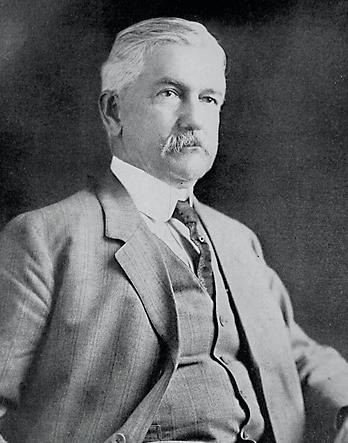
But things didn’t go well in Panama. Lesseps realized too late that a waterway that ran across the isthmus at sea level wasn’t practicable. And the conditions could hardly have been worse: Heavy rains pounded, creating mudslides that swept away workers and equipment alike. Civil war broke out, and whole cities burned. Boulders rolled out of the mountains and crushed everyone in their paths. And most devastatingly, mosquitos spread yellow fever and malaria among
It takes 8 to 10 hours to transit the canal’s 50-mile length
In 2007, a $5.25 billion project expanded the canal to handle larger cargo ships.
the workforce. As many as 20,000 died, and Lesseps and his financial backers abandoned the project in 1888.
But the prospect of a canal here was too tempting to leave for long. Panama formally separated from Colombia in 1903, becoming an independent nation backed by the U.S. military. In 1904, the U.S. Army Corps of Engineers restarted the work the French has started.

One of the unlikely heroes was a man named William Crawford Gorgas. An Army doctor, he had seen yellow fever before during his long career serving all over the world. While many didn’t believe him, Gorgas knew mosquitos spread the disease. He ordered ponds drained, fumigated work areas, and covered the windows of homes and bunkhouses with nets. His efforts saved thousands of lives.
The Americans (with laborers mostly from the West Indies) built a canal that climbs to a height of 85 feet. Locks lift ships up to the artificial Gatun Lake, then lower them back down on the other side. It was, at the time, the most expensive construction project in U.S. history. Workers excavated almost a quarter-billion cubic yards of soil and rock to make it happen.
For decades, the canal was legally American soil. An unincorporated territory, the Panama Canal Zone extended for five miles from
the center line of the waterway, covering 553 square miles and operating as a whole separate world from the Central American country that completely surrounded it. The U.S. government operated everything from post offices to movie theaters and bowling alleys in the towns within. In 1979, the Zone was abolished with the advent of joint U.S.–Panamanian control, and ownership of the canal was passed wholly to Panama in 1999.
While few of its wonders are visible from ground level, the Panama Canal remains an exceptional place. Crossing the Bridge of the Americas, I peered down at cargo ships and pilot boats passing underneath. Just beyond rose the docks of the Port of Balboa, the busiest container port in Latin America.
And on a drive to the Pedro Miguel Locks, I watched the little locomotives that help ships through the chambers. Known as “mules,” they toot-tooted past. Further up, a big cargo ship made its way toward the mountains, away from Panama City, headed for the Atlantic, passing from one ocean to the next in less than half a day. Everything around me looked industrial. But this was certainly a modern-day marvel—an understated wonder, hundreds of years in the making.
Tim Johnson is based in Toronto. He has visited 140 countries across all seven continents.
Fly: Panama City’s Tocumen International Airport (PTY) is a major Latin American hub.
Getting Around: While Panama City has a public transit system that includes a metro, ridesharing services are probably your best option. To get close to the canal, book a city tour with a company such as Hover Tours.
Stay: The five-star Las Américas Golden Tower Panamá sits in the heart of Panama City.
Take Note: While Panama technically has its own currency (called the balboa), cash transactions are all in U.S. dollars.
An enduring icon that’s inspired a hundred variations, the martini is a simple, sophisticated drink any way you stir—not shake—it.
By Kevin RevolinskiFor s U ch a crystalline-clear cocktail, the martini’s true origin is a bit murky. The fact is, gin and vermouth mingle together well. A recipe in print from the 1890s shows a ratio of half and half plus four dashes of bitters. But the gin of the time may have been Dutch genever until the sweeter English “Old Tom” variety gained popularity. Plus, the vermouth of the time would’ve been sweet, which is why 20th-century drinkers would specify a “dry” martini to get the dry, lighter-colored vermouth, and by that time the preference for London dry gin was typical.
As for the name, the early recipes bear resemblance to the Martinez—equal measures of gin and sweet vermouth plus a bit of maraschino liqueur. This drink was allegedly named for a patron for whom it had been made or potentially in honor of a city in California. It’s possible the name “martini” evolved along with the recipes, but no one knows for certain.
As for the mixing of the drink, forget any James Bond references here. “Shaken, not stirred”? You can do it to chill the drink faster, but simply stirring it long enough to chill it, which takes about twice as long as shaking, eliminates the aeration of the ingredients and prevents any clouding of the liquid.
London dry gin became the typical starting point for the cocktail.

Olives are the classic garnish; the popular dirty martini goes further with a splash of olive brine.

Some “variations” bear resemblance to the original only in name.
• 2 1/2 ounces London dry gin
• 1/2 to 1-ounce dry vermouth
• 1 to 2 dashes orange bitters
• Green olive or lemon twist for garnish In a mixing glass filled with ice, combine gin, vermouth, and bitters.
Stir for about 30 seconds, then strain into a martini glass. Garnish with olive or lemon twist.
A dirty martini likes olives and adds half an ounce of the brine to the recipe. A reverse martini goes 2:1 dry vermouth to gin. The number of variations on the martini is well into triple digits, whether it’s varying the proportions, swapping gin for vodka, or in more extreme cases adding ingredients to make some flavorful aberration with a name as senselessly irrelevant as “rum and coke,” which is made with whiskey and 7UP.
Consider the opaque chocolatini, made with vodka (or chocolate vodka), heavy cream or Irish cream, and

A classic dry martini calls for more gin than vermouth, possibly orange bitters, and an olive or lemon twist garnish.

crème de cacao or even a squirt of chocolate syrup on the glass. With Valentine’s Day coming up, expect to see love martinis: vodka, Malibu rum, peach schnapps, and cranberry juice.
At this point, the only connection may be serving the drink in a martini glass. To each their own, of course, but there’s something to be said for letting a couple of simple ingredients sing alone on stage. Here’s a good place to start—but by all means tweak away!
Kevin Revolinski is an avid traveler, craft beer enthusiast, and home-cooking fan.
A sure way to ensure you have the best-tasting beer in the world is to make it yourself

If you want your friends to think of you as a creative genius, brew your own beer.
BY
PHOTO BOGAC ERKAN/SHUTTERSTOCKSome scientists believe beer was created by accident, when grains collected by prehistoric hunter-gatherers were inadvertently exposed to water and subsequently fermented, creating a liquid that has since evolved into what we call beer. The oldest records of beer were discovered by archeologists in the ancient Sumerian city of Umma in Iraq, dating to around 2050 B.C.
As one of the top five beverages enjoyed worldwide today, an estimated 6.3 million gallons of beer were consumed in the United States in 2020, produced by more than 9,000 breweries.
Yet, despite a plethora of readily available choices, many opt to brew their own beer, either inspired to create a unique flavor or spurred by a strong case of I-can-do-it-better. As imagined, since it can be made by cavemen, modern man can also brew beer. The good news for those who slept through high school chemistry class is that the process is simple; finding a space to create a home brewery is possibly the most difficult part.

Just as wine is essentially any beverage made from fermented grapes, beer is made by heating grains to form a mash, after which the brewmaster adds ingredients such as hops to create a specific flavor and then allows it to ferment for several weeks, adding yeast to create carbon dioxide
and alcohol. The brewing process can be simple or complex, subject to the personal whims of the brewmaster.
The equipment needed includes a fermenter to hold the water and grains, which should be equipped with an airlock to prevent an excessive buildup of the carbon dioxide that is created during the fermentation process. This is when the grains and water are converted into a liquid called wort; hot water (about 150 degrees F) is used to initiate and speed up the enzymatic process, during which starches are converted into sugars—some refer to this as the mash stage. In the lautering process, solids such as husks are removed from the wort. A fermenter can be as basic as a food-grade five-gallon bucket or as high-tech as a BrewBuilt X2 Uni-Conical fermenter.
The next item on the list is a brew pot, used to “cook” the wort and other ingredients. The size of the brew pot dictates how much beer can be
After the wort has been boiled, it’s allowed to cool, water is added, an initial specific gravity reading is taken, yeast is added, and it’s transferred to bottles for final fermentation.
Barley is the most popular grain used to brew beer. It must be malted to prepare it for use making beer by being soaked in water to germinate, in which small sprouts form.

The beer’s specific gravity is measured at the beginning and end of the fermentation process to make sure the ABV— alcohol by volume— matches the recipe.


6.3 million gallons of beer were consumed in the United States in 2020, produced by more than 9,000 breweries.
produced, but keep in mind there needs to be enough headspace to help prevent the ingredients from boiling over and creating a stinky mess. A heat source is needed to boil the ingredients, with options ranging from a kitchen stove to a propane-fueled cooker (always ensure adequate ventilation, and place cookers a safe distance from flammable items). Other basic equipment includes strainers, thermometers, a hydrometer to measure sugar density of wort, and tubing to transfer liquids from one vessel to another. All equipment must be carefully sanitized before it is used to help prevent contamination, which could negatively affect the beer’s flavor and could possibly ruin a batch.

A variety of hops are added during the boiling phase to create a distinctive flavor. Bittering hops are used first to mitigate the sweetness of the wort. After about an hour of boiling, when there are approximately 15 minutes remaining in the boiling process, the brewmaster adds hops selected for their flavor, from citrus to earthiness. At the completion of the boiling process, finishing hops are added and the beer’s finished flavor is created.
The selection of hops highlights the brewmaster’s skill and creativity.
After the boiled wort cools, yeast is added to convert the sugars in the wort into alcohol and carbon dioxide, after which it is allowed to ferment in a cool, dark place for about a week to 10 days. To prepare the almost-finished beer for drinking, a bit of sugar dissolved in water is added to create carbon dioxide that will carbonate the beer. The final step is to bottle the beer using containers that can withstand the pressure of carbonization. Age the beer in a cool, dark, but not refrigerated place for about 10 days, after which it can be refrigerated and enjoyed.
Those wanting to create a brewing facility rather than cobbling a system together might consider ready-to-use systems, such as a Blichmann 3-Vessel system, which makes brewing relatively simple and can double as man cave décor. Crafted of gleaming stainless steel, this system includes pumps, heaters, and three vessels sized to create 5- to 15-gallon batches, all resting on a restaurant-grade, 14-gauge stainless steel table. One of these or similar systems can have a brewmaster creating batches of 5 to 20 gallons within hours of delivery. There are also many less sophisticated brewing systems to choose from.
Those who like beer find it even more appealing when they discover the joy of making their own oneof-a-kind brew that perfectly suits their taste.
A home brewery requires a clean, well-lit, well-ventilated space with ample room to move large containers of beer. Some brew in their kitchen, but that’s a sure way to strain a marriage, so find another place.
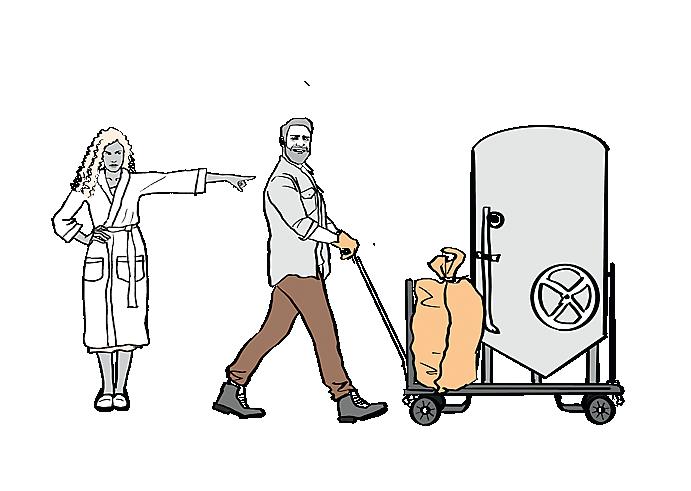

Like all other hobbies, brewing beer can easily become a lifelong passion with membership in a worldwide club of fellow brewmasters ready to share tips and tricks.



$350
Inspired by the firm’s world-famous multifunction Swiss Army knives, this timepiece starts with a reliable analog movement and then adds a dive watchstyle outer bezel to make it easy to keep track of elapsed time, and a very practical day/date window. The sleek 42 mm case and black leather strap make it a great choice for the beach or the boardroom.

$90
Iconic watchmaker Timex’s approach takes the basic field watch and adds a very practical chronograph function that stands ready to time events to 1/20th of a second. The hefty 43 mm case provides water resistance for the analog quartz movement to depths of 164 feet, while the easy-to-read dial displays the current time as well as elapsed seconds, minutes, and hours.

$495
American watchmaker Hamilton put civilian production on hold in 1942 to provide timepieces to the U.S. Army, and this updated model features the same classic, no-frills styling and a modern, self-winding mechanism with an impressive 80-hour power reserve. A stainlesssteel housing provides water resistance to 164 feet, while a nylon strap with leather accents keeps it securely in place.

$315
Lawrence of Arabia would’ve loved this watch, with its uncluttered design, a dial and strap the color of the Sahara, and a beefy 42 mm case that is water resistant to depths of 330 feet. The dial features large, easily read hour and minute hands that can display military time. The transparent case back provides a view of the automatic movement with a 40-hour power reserve in action.
$250
Citizen blends high-tech with classic styling in this reimagined field watch equipped with the firm’s proprietary Eco-Drive movement, powered by any light source, to completely eliminate the need for batteries. The 37 mm housing makes it a good choice for men and women seeking a rugged but not chunky watch that’s water resistant to depths of 333 feet.
Designed to keep soldiers on time, these rugged watches are just as practical for the rest of us who enjoy a stylish air of adventure.Luxury Living Field Watch Roundup
Are there books you’d recommend? We’d love to hear from you. Let us know at features@epochtimes.com
This week, we feature a no-nonsense manual for the young approaching life after school and a roadmap for Americans to reject the path of socialism.
visa), the fireworks begin. Will the bitter Kate find happiness? This retelling of Shakespeare’s controversial “The Taming of the Shrew” offers a wonderful take on love, marriage, and family, with Tyler’s humor and eye for human eccentricity in full play.
HOGARTH, 2017, 256 PAGES
By Brad Thor
Brad Thor’s debut novel established his popular protagonist, Scott Harvath, as the source of action-packed and suspenseful reading. The ex-Navy SEAL turned Secret Service agent must uncover the truth after the murder of 30 agents and a kidnapped president.
POCKET STAR BOOKS, 2002, 512 PAGES
 By Donald E. Chipman
By Donald E. Chipman
and infiltrating all aspects of Americans’ lives. Author, patriot, and former Speaker of the House of Representatives Newt Gingrich offers strategies for Americans to reject these destructive influences and reclaim a great nation.
CENTER STREET, 2022, 288 PAGES

Prickly Kate Battista cares for her unconventional scientist father, monitors her flirtatious 15-year-old sister, and works in a daycare. When her father asks Kate to marry his brilliant lab assistant Pyotr to prevent his deportation (due to an expired
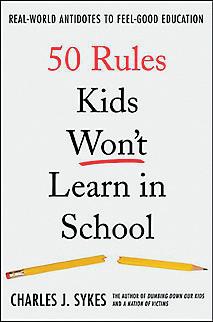 By Charles J. Sykes
By Charles J. Sykes
Everyone under 20 years old should read this no-nonsense, honest user manual for life. Starting with rule No. 1 (Life’s not fair. Get used to it.) and ending with No. 50 (Enjoy this while you can.), it offers 50 short essays on the way things really work once you finish school. Its advice runs counter to today’s conventional, soft wisdom. Readers are told that they aren’t entitled, that humiliation is a part of life, and that being perpetually offended is a dismal way to live. It’s worth reading.
ST. MARTIN’S PRESS, 2007, 192 PAGES
This book offers an accessible history of the opening of the Americas. It provides a readable story for the general public and an accurate one for scholars, with a clear account of the initial settlement of the Caribbean and the conquest of Mexico. It has an entertaining narrative without compromising accuracy. These notable events are placed in a historical context, which avoids surrendering to 21st-century political leanings.
STATE HOUSE PRESS, 2021, 320 PAGES
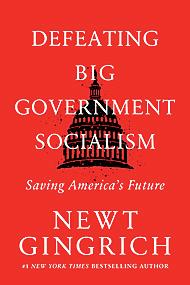 By Newt Gingrich
By Newt Gingrich
America, as we know it, is at risk. Subtly and not so subtly, big government is taking over
 Edited by James Shapiro
Edited by James Shapiro
Subtitled “An Anthology from the Revolution to Now,” this collection begins with an account of U.S. troops gathered in 1846 just prior to the war with Mexico. They decide to stage a production of “Othello,” with Lt. Ulysses Grant playing Desdemona. Grant “did not have much sentiment” and was replaced by a professional actress. And on it goes, with reviews, essays, and stories that demonstrate the enormous influence of Shakespeare in the making of America. An entertaining read for lovers of literature and our history.
LIBRARY OF AMERICA, 2016, 724 PAGES
A small band of prisoners escape a Soviet gulag, cross mountains and deserts, and reach safety in India, all while facing fear, hunger, and the elements. A true story of resilience and the human spirit. Inspiring for teenagers.

LYONS PRESS, 2016, 288 PAGES

Peter awakens to his city neighborhood transformed into a snow-covered wonderland. This inviting classic celebrates the simple childhood excitement and delight of exploring and playing in the snow. A lovely read for wintertime.
VIKING PRESS, 1962, 40 PAGES
Ian Kane is a U.S. Army veteran, filmmaker, and author. He enjoys the great outdoors and volunteering.

This week, we feature a fantastic reimagining of a classic monster flick and a fun family adventure about kids shrunken to a minuscule size.

When her young cousin is suddenly kidnapped on the streets, the daughter of an underworld figure seeks the help of a troubled ex-Marine named LT (Tory Kittles). But as LT ventures forth on his mission, he comes to the attention and target of dangerous forces.
This is a relatively entertaining actioner with twists and turns along the way. Kittles seems to be channeling his inner Denzel Washington from the “Equalizer” series but is convincing in the role he plays. The film isn’t rated, so just be aware that it contains violence.

HERMAN MELVILLE’S CLASSIC NOVEL
After losing his leg to a notorious white whale, Captain Ahab (Gregory Peck) becomes obsessed with killing the

animal. He leads his ship’s crew to track down the whale, but his grudge may spell their doom.
With deft cinematography that captures its nautical
ACTION | THRILLER
Release Date: Feb. 10, 2023
Director: Matthew Newton
Starring: Tory Kittles, Libe Barer, Sarunas J. Jackson
Running Time: 1 hour, 33 minutes
Absent-minded scientist Wayne Szalinski (Rick Moranis) develops a device that can shrink things. Oops! He mistakenly shrinks his and his neighbors’ kids down to minuscule size and unknowingly tosses them into the trash. The kids must traverse the now-dangerous backyard to get back to the house and, hopefully, safety.
This is one of those classic ’80s family adventure films that evokes nostalgia with each viewing. It sports some great stop-motion effects
and lots of ridiculous action. It’s great for kids, and entertaining for adults, too.
ADVENTURE | COMEDY | FAMILY
Release Date: June 23, 1989
Director: Joe Johnston
Starring: Rick Moranis, Matt Frewer, Marcia Strassman
Running Time: 1 hour, 33 minutes
MPAA Rating: PG
Where to Watch: DirecTV, Redbox, Amazon
MPAA Rating: Not Rated Where to Watch: Theaters A JUNGLE THRILLER WITH HEART
subject matter, as well as crisp acting and direction, this film manages to capture the main themes of the classic novel.
ADVENTURE | DRAMA
Release Date: June 27, 1956
Director: John Huston
Starring: Gregory Peck, Richard Basehart, Leo Genn
Running Time: 1 hour, 56 minutes
Not Rated Where to Watch: AppleTV, Hoopla, Vudu
Manipulative film producer Carl Denham (Jack Black) lures his cast and crew to the mysterious Skull Island, where he hopes to make a blockbuster film. Instead, his precious star, actress Ann Darrow (Naomi Watts), gets kidnapped by a humongous ape.

Underneath all of the chomping, stomping, gripping, and ripping that the monstrous creatures on Skull Island engage in, there lies a highly entertaining adventure that stays
relatively true to the 1933 original—with gorgeous visuals and solid acting.
ACTION | ADVENTURE | DRAMA
Release Date: Dec. 14, 2005
Director: Peter Jackson
Starring: Naomi Watts, Jack Black, Adrien Brody
Running Time: 3 hours, 7 minutes
MPAA Rating: PG-13
Where to Watch:
DirecTV, Vudu, Redbox
ON MAY 25, 2017, The Epoch Times published an article headlined “Despite Allegations, No Evidence of Trump–Russia Collusion Found.” The article detailed that—despite a media frenzy at the time—no actual evidence had been uncovered that President Donald Trump or anyone associated with his campaign had colluded with Russia to influence the 2016 presidential election.
OUR REPORTING was proven accurate with the conclusion of the investigation by special counsel Robert Mueller.
NOT ONLY DID WE NOT BUY INTO the false narrative that Trump colluded with Russia, but we have also been a leader in reporting on the irregular and apparently politicized nature of the FBI’s investigation of the Trump campaign. During the past five years, we have published dozens of articles on the topic, many of them exclusive.
FOLLOWING THE 2020 ELECTION, The Epoch Times was at the forefront of investigating and reporting on the questions surrounding the integrity of the election. Through our fact-based and independent reporting, we were able to uncover multiple irregularities.
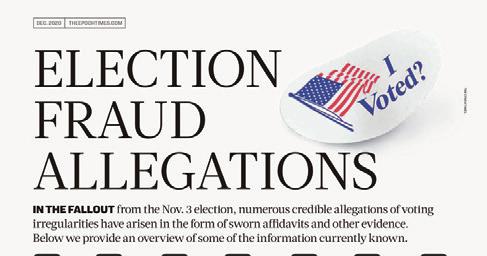

ON APRIL 15, 2020, The Epoch Times published its documentary
“Tracking
Down the Origin of Wuhan Coronavirus.” The film, which received over 100 million views, explored the origins of the virus, including the possibility of a lab leak. It presents scientific data and interviews with top scientists and national security experts.

YEARS AFTER THE RELEASE of this groundbreaking documentary, the possibility of a lab leak is considered by government officials and experts as the most likely explanation for the virus's spread.
SINCE ITS INCEPTION in the year 2000, The Epoch Times has been at the forefront of reporting on the infiltration of the United States by the Chinese Communist Party. Numerous times over the years, we've broken major China-related stories ahead of other news organizations.
In 2003, The Epoch Times was the first media outlet to systematically and continuously report on the spread of SARS, well ahead of most other Western media. We were also the first to report on state-sponsored forced organ harvesting in China—one of the most underreported atrocities of our time—in

which prisoners of conscience are killed for their organs, which are then sold for profit on a large scale.
THE EPOCH TIMES also published the editorial series
“Nine Commentaries on the Communist Party,” revealing the true nature and history of the Communist Party and inspiring a movement that so far has seen more than 400 million Chinese people quit the Party and its affiliated organizations. Another of our series, “How the Specter of Communism Is Ruling Our World,” systematically exposes the evil nature of communism, as well as the harm it has brought and continues to inflict on the United States and the world.
We believe that investigating and exposing the truth is the only way that we can remain safe and free
Most of us believe we have good manners, but sometimes, we may inadvertently slip a bit. The following are things that many do without realizing they’re breaking etiquette laws.
By Bill LindseyContinuing a phone call as you board and then ride an elevator, while you’re at the checkout register of a store, or while a waiter is taking your order sends a signal to those around you that they aren’t worthy of your attention or consideration. The only thing worse is making a call during any of these scenarios. End the call with a promise to call back as soon as possible.
Frantically waving a hand to flag down a waiter goes right past rude into arrogant behavior. If you find yourself dining at a restaurant at a time when there are many patrons and not enough wait staff, find the manager and discuss the situation or simply be patient and understanding—these things happen. Resist the urge to make a scene by waving at or yelling at a waiter, especially one serving diners at another table.
It’s common to see many diners neglecting to use a napkin at restaurants or during dinner parties. To help avoid stained clothing, place the napkin in your lap when you take your seat, use it as needed during the meal, and then place it on the table at the end of the meal. If you absolutely must use it to muffle a sneeze, discreetly request a new napkin from the server.
One of the most common examples of bad manners involves folks who resist any normal interaction with others, be they co-workers or strangers. A friendly smile is a great icebreaker when meeting someone for the first time and a warm way to greet friends and co-workers. Eye contact is an effective way to make others feel comfortable; people who refuse to make eye contact are often seen as rude, even if it’s actually shyness.
When bringing someone new to a business event, work-related meal, or when meeting friends after work, make a point to introduce him or her to the others instead of ignoring the fact that they don’t know anyone there. This helps the new person relax and feel comfortable in unfamiliar surroundings, while also sending a subliminal message to others that you respect your associate and expect them to be treated well.

